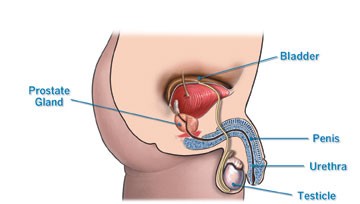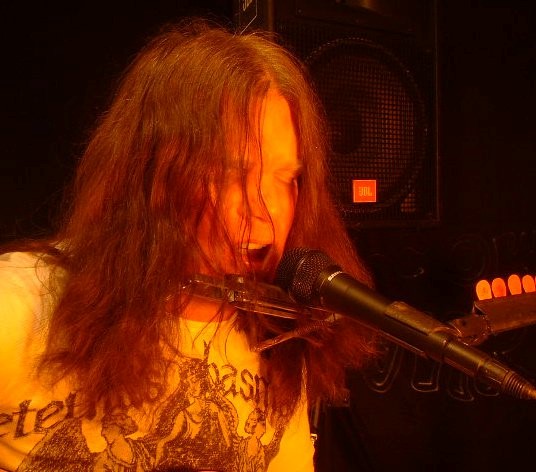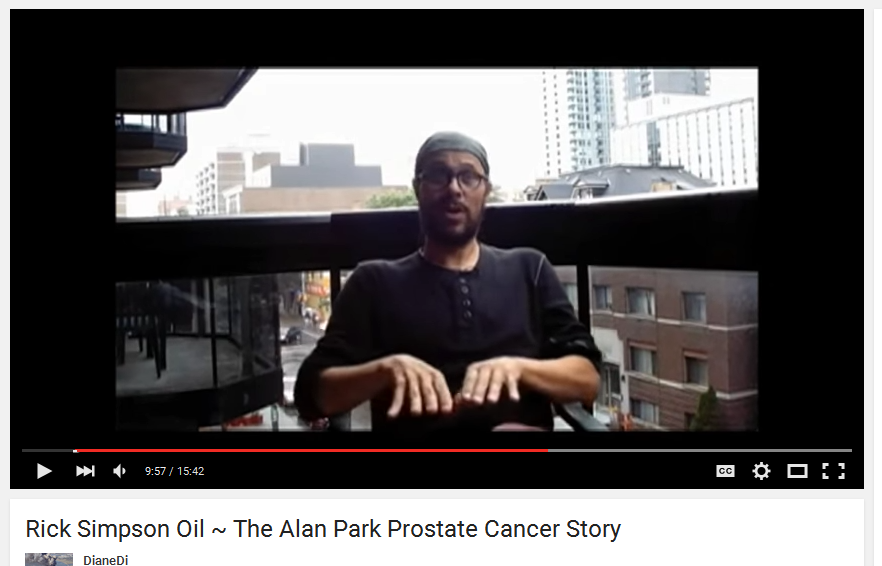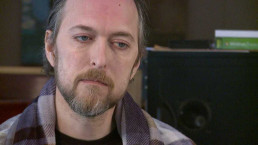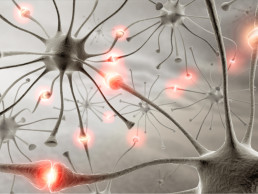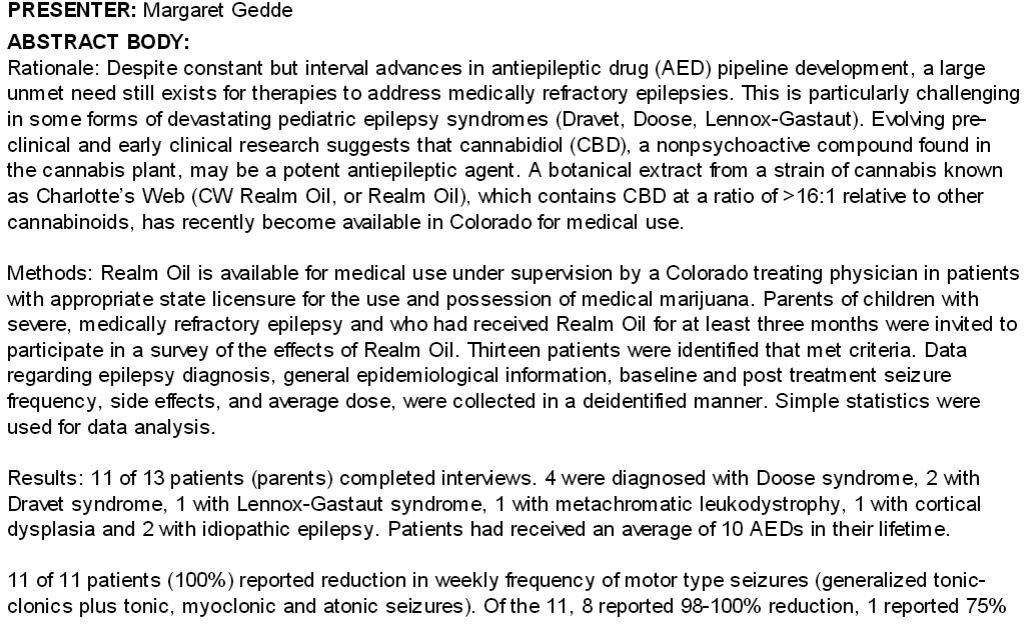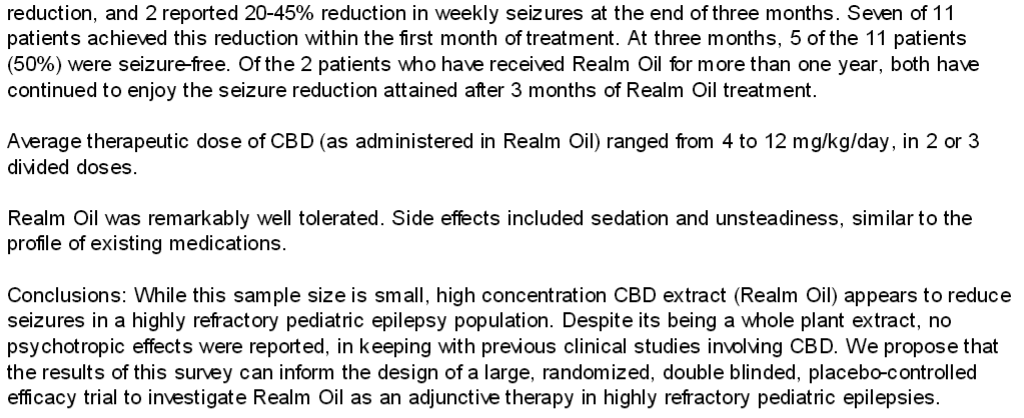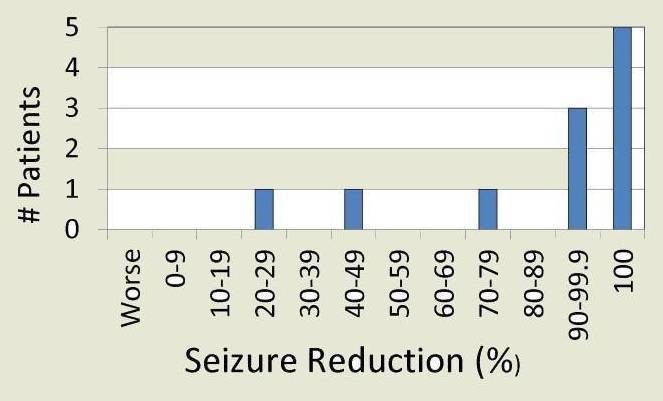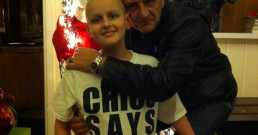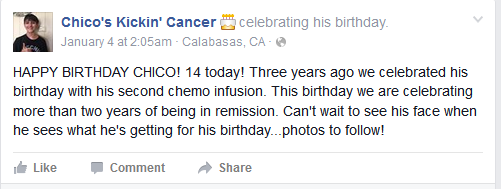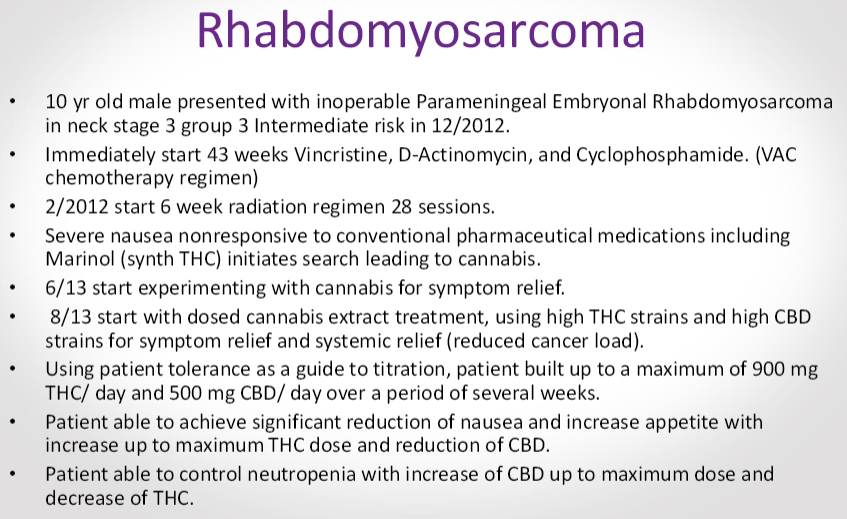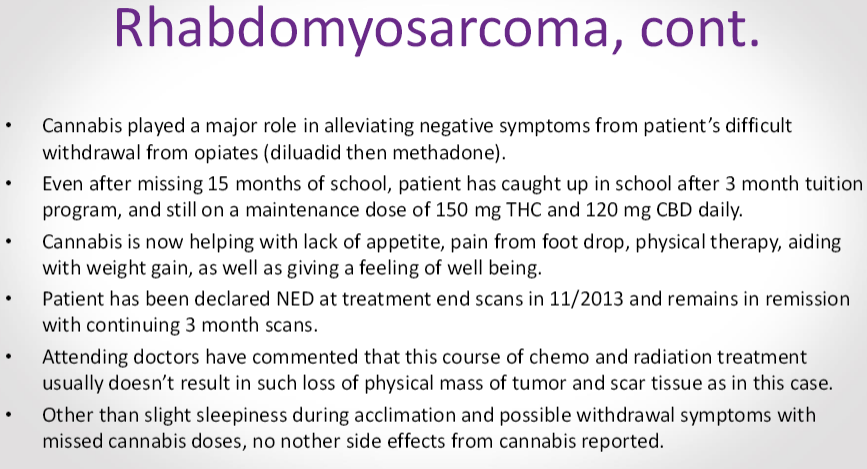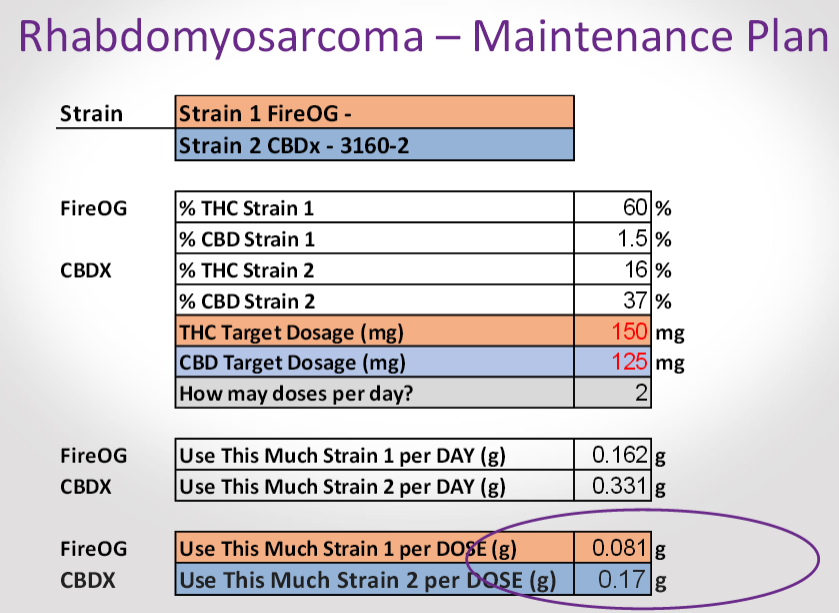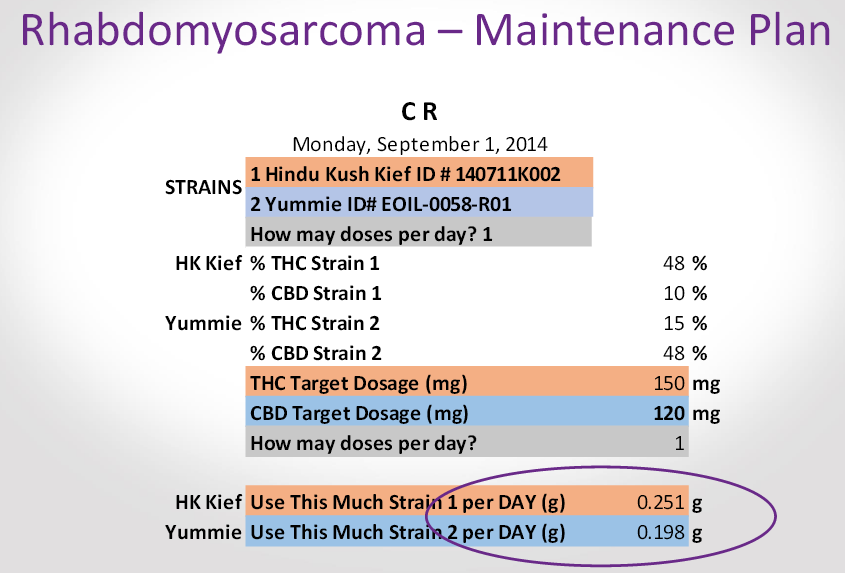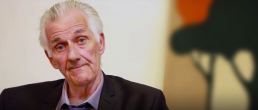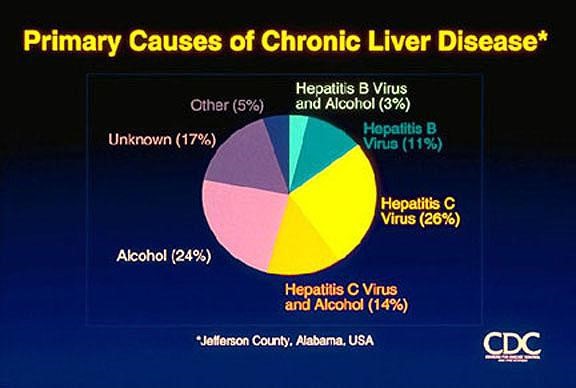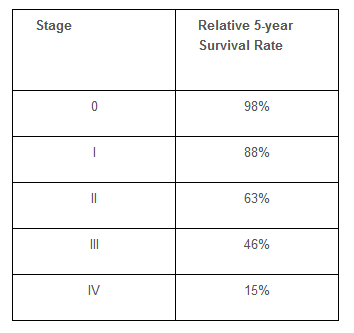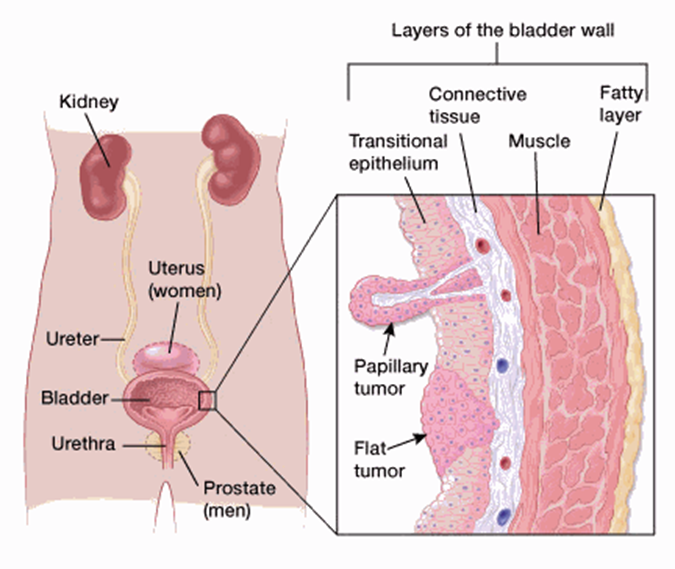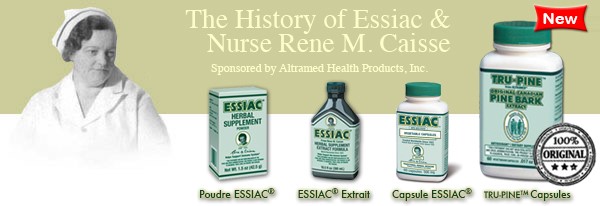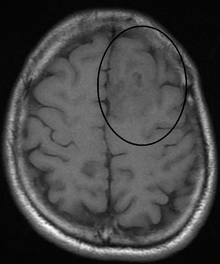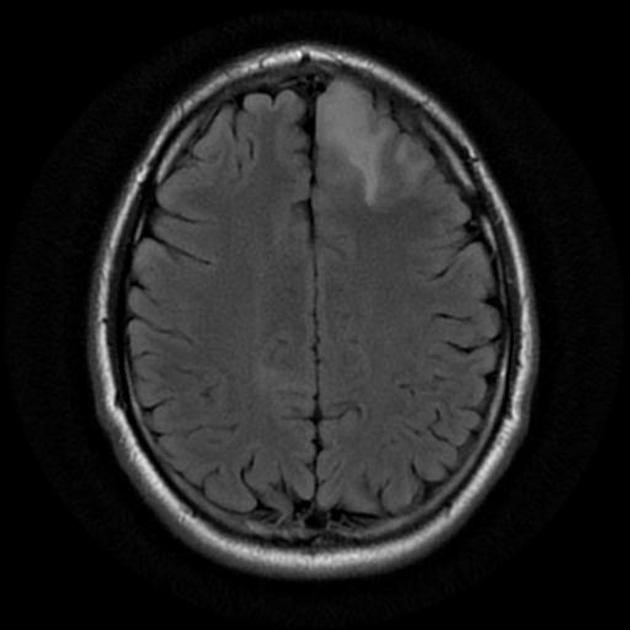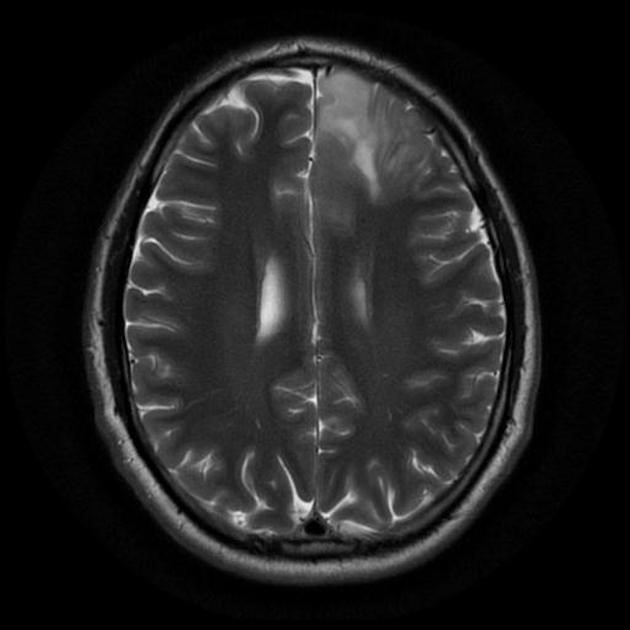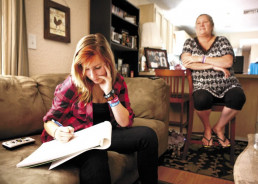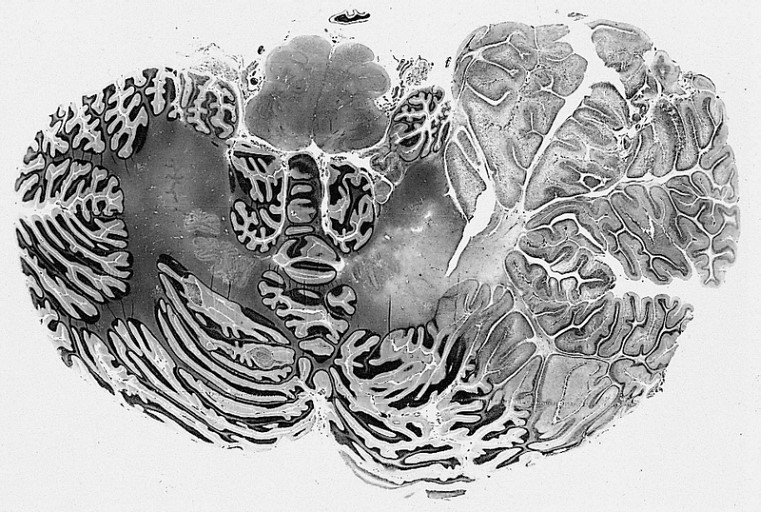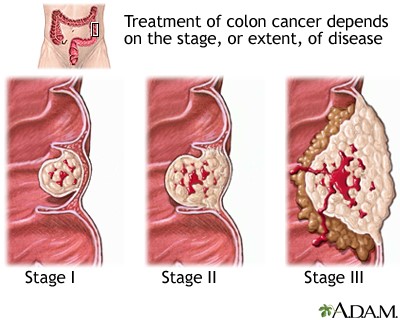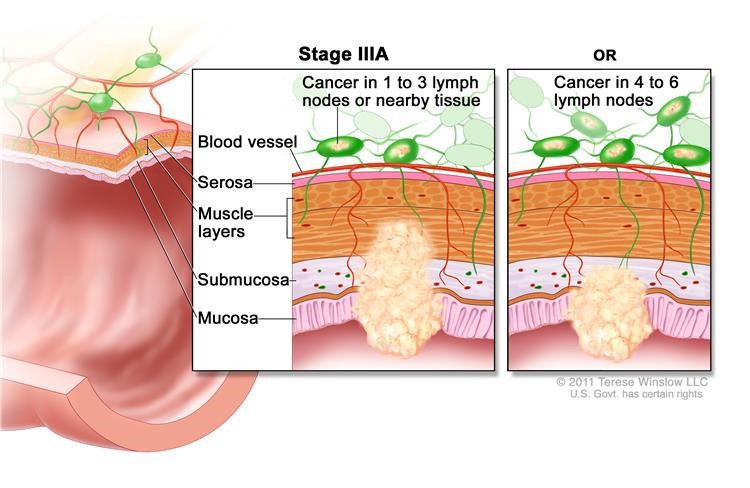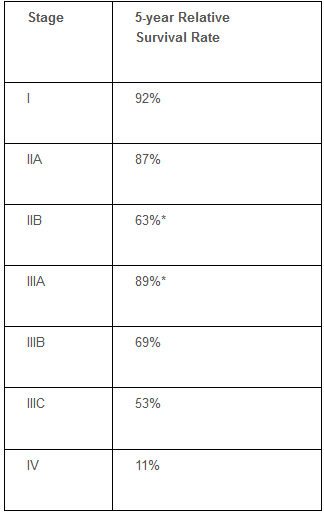Cannabis and Prostate Cancer: The Stories of Dusty Frank and Alan Park
Cannabis and Prostate Cancer: The Stories of Dusty Frank and Alan Park
Mr Frank’s story was originally published on Whaxy by Marie Veksler – Oct 20, 2014
There is growing enthusiasm for using cannabis oil in the treatment of prostate cancer. This is one of the most common cancers a man can get. It’s not particularly aggressive but the treatments can be extreme. As seen from the description below. You may recall that the celebrity Tommy Chong cured his prostate cancer using cannabis as part of his treatment.
From Mayo Clinic:
Prostate cancer is cancer that occurs in a man’s prostate — a small walnut-shaped gland that produces the seminal fluid that nourishes and transports sperm.
Prostate cancer is one of the most common types of cancer in men. Prostate cancer usually grows slowly and initially remains confined to the prostate gland, where it may not cause serious harm.
While some types of prostate cancer grow slowly and may need minimal or no treatment, other types are aggressive and can spread quickly.
Prostate cancer that is detected early — when it’s still confined to the prostate gland — has a better chance of successful treatment.
Symptoms
By Mayo Clinic Staff
Prostate cancer may cause no signs or symptoms in its early stages.
Prostate cancer that is more advanced may cause signs and symptoms such as:
• Trouble urinating
• Decreased force in the stream of urine
• Blood in the semen
• Discomfort in the pelvic area
• Bone pain
• Erectile dysfunction
Prostate screening tests might include:
• Digital rectal exam (DRE). During a DRE, your doctor inserts a gloved, lubricated finger into your rectum to examine your prostate, which is adjacent to the rectum. If your doctor finds any abnormalities in the texture, shape or size of your gland, you may need more tests.
• Prostate-specific antigen (PSA) test. A blood sample is drawn from a vein in your arm and analyzed for PSA, a substance that’s naturally produced by your prostate gland. It’s normal for a small amount of PSA to be in your bloodstream. However, if a higher than normal level is found, it may be an indication of prostate infection, inflammation, enlargement or cancer.
Diagnosing prostate cancer
If an abnormality is detected on a DRE or PSA test, your doctor may recommend tests to determine whether you have prostate cancer, such as:
• Ultrasound. If other tests raise concerns, your doctor may use transrectal ultrasound to further evaluate your prostate. A small probe, about the size and shape of a cigar, is inserted into your rectum. The probe uses sound waves to make a picture of your prostate gland.
• Collecting a sample of prostate tissue. If initial test results suggest prostate cancer, your doctor may recommend a procedure to collect a sample of cells from your prostate (prostate biopsy). Prostate biopsy is often done using a thin needle that’s inserted into the prostate to collect tissue. The tissue sample is analyzed in a lab to determine whether cancer cells are present.
Once testing is complete, your doctor assigns your cancer a stage. This helps determine your treatment options. The prostate cancer stages are:
• Stage I. This stage signifies very early cancer that’s confined to a small area of the prostate. When viewed under a microscope, the cancer cells aren’t considered aggressive.
• Stage II. Cancer at this stage may still be small but may be considered aggressive when cancer cells are viewed under the microscope. Or cancer that is stage II may be larger and may have grown to involve both sides of the prostate gland.
• Stage III. The cancer has spread beyond the prostate to the seminal vesicles or other nearby tissues.
• Stage IV. The cancer has grown to invade nearby organs, such as the bladder, or spread to lymph nodes, bones, lungs or other organs.
Listed below are the top 5 most commonly used treatment options for cancer, according to the National Cancer Institute.
• Surgery–to remove prostate. There are abdominal or perineal approaches.
• Radiation- External. Internal: Radiation placed inside your body (brachytherapy).
• Chemotherapy– Oral or Intravenous
• Hormone Therapy removes or blocks the hormone testosterone known to increase tumor growth.
• Freezing the prostate using needles inserted into the prostate.
• Targeted Therapy uses antibodies, drugs or other substances to target ONLY cancer cells without harming normal cells.
DUSTY FRANK
In October 2013, Dusty Frank, an award-winning singer and songwriter from Glenn Falls, NY was diagnosed with prostate cancer. His urologist told him that his treatment options were the usual: radiation or radical prostatectomy (total prostate removal). Frank preferred the use of cannabis oil over conventional treatments because often times the surgery leaves one impotent and or incontinent. Considerable blood loss is also an issue with this type of surgery.
Frank begin making his own cannabis oil in the same fashion as described on Run From The Cure video. He consumed 60 grams of cannabis oil within a 90-day period.
After only four days of the cannabis treatment, he noticed that pain from arthritis in his foot and shoulder were gone. He was able to use his hands more easily and tie his boots again. At the completion of his cannabis oil treatments his doctor ordered a follow up MRI. To his doctor’s amazement his MRI results were cancer-free.
Mr Frank was on several potent medications also for pain, anxiety and insomnia. Many of these have severe side effects and several are highly addicting. While on the cannabis oil he successfully weaned himself off of several drugs that caused a plethora of negative side effects. These include weaning himself off of OxyContin, Xanax, Ambien and several others. He even stopped taking his blood pressure medication since he was no longer hypertensive.
Said Frank:
“I haven’t had a pain pill in months. I no longer need any of these drugs.”
Doctors warned him that he did not have 3 months to explore alternative treatments. But explore them he did and much to his benefit.
ALAN PARK
Next we have comedian Alan Park who successfully used Rick Simpson oil as treatment for his prostate cancer, originally published on You Tube Oct. 17, 2014.
In an interview by Russel Barth, Mr Park tells us that in November of 2013 he was given the diagnosis of prostate cancer with a PSA of over 700! A normal PSA is under 4 just to give you an indication of how advanced his cancer was. He was subsequently referred to an oncologist. Alan informs us that upon diagnosis he immediately started himself on Rick Simpson Oil (RSO).
Starting out with tiny incremental doses and working his way up to the usual dose of what appears to have been one gram per day.
Alan had been having trouble sleeping previously because he would have to urinate every thirty minutes. After starting RSO he was able to finally get good quality sleep again often sleeping for up to five hours without the need to urinate. He would dose up and get quality sleep usually at around 10 PM all the way to 3 AM. In the afternoon he would again dose high and sleep for hours when he didn’t have to work. Every day taking RSO he felt better and better. He was feeling better because he was better and the PSA proves it.
MASSIVE DECREASE IN PSA
Are you sitting down? Here’s an amazing find. From the initial PSA of over 700, he reduced it to 375 in only two weeks. After one month of RSO his PSA dropped to 24 by January. His oncologist had recommended a drug which he claims would decrease his PSA to about 25 in one year, not one month. RSO did it in record time with no significant side effects. All the while Alan is feeling better and better. His appetite improved as well.
On one occasion Alan felt so good at his doctor’s office that his doctor said “You must be doing something.”
At that point he confessed that he had been using “pot oil” since his diagnosis. Predictably his oncologist looked at him and muttered something about how the RSO was only mimicking his natural hormonal system and that it’s not responsible for the crashing PSA values. So it was dismissed and never brought up again. Sound familiar?
But ignoring this marvelous oil’s actions didn’t last long. His next PSA from Feb came back 12. His March PSA was 4.5. April’s PSA came back a staggeringly low 1.76.
Let’s look at these numbers. Alan started out with an extremely high PSA of over 700. He immediately started RSO. In no more than five months, Alan’s PSA dropped to normal at 1.76. Based on those numbers we have a certified remission or cure. But was it really due to the RSO? The only way to know for sure would be to stop it and see if his PSA changes.
RE-CHALLENGE
Whenever one wishes to reveal a drug’s effect versus some other type of effect we do what’s called a re-challenge. Here Alan stopped his RSO in April for just one week. After seven days of no RSO, his PSA climbed back up rapidly to 4.5.
Upon re-challenge with the usual dose of RSO his follow up PSA plummeted to the lowest number ever—1.19!
This serves as indication that the RSO was indeed the drug responsible for dropping his PSA values.
Prostate cancer cancer seems to be particularly sensitive to the healing effects of RSO. In fact, it’s actions are so powerful that we should expect a pharmaceutical backlash since evidence suggests that it may outperform commercially used drugs.
Cannabis Oil and Cancer: The Story of Benton Mackenzie
Cannabis Oil and Cancer: The Story of Benton Mackenzie
This case is very interesting. It involves the use of cannabis oil in suppressing a cancer that has no effective conventional treatment outside of surgery. It is even more captivating because he was using a cannabis oil preparation that was mostly/all CBD which is not the usual way we have seen people treating cancers. Lastly, it’s thought-provoking because this is the first time that we’ve witnessed cancer respond to pure CBD oil as opposed to using a balanced THC/CBD preparation. It also highlights the absurdity of the Iowa criminal justice system, and how a man can be made into a criminal based only on his will to live.
Benton Mackenzie age 48, a resident of Iowa, became a lightning rod for marijuana activists last year after he was arrested for growing his own medical marijuana in a state where possession of pot is still highly illegal. In fact, Iowa and Nebraska have gone so far as to sue Colorado for increasing drug trafficking through their states.
Mackenzie claims that he was growing and using pot for treating a highly painful and deadly cancer. At the time he was facing the possibility of an extended prison sentence if found guilty—a prospect that would insure his death as certain as if her were executed by the state. That prospect came about anyway after he was deprived of his life-saving oil.
May, 2013. In Davenport, Ia., Scott County jurors delivered a guilty verdict on four felony charges. His wife and son were also convicted of the same offences. Benton’s case made national news because his marijuana use was to control the growth of several large, painful tumors on his buttock and legs. Without the use of this controversial and illegal substance, his tumors would grow like desert flowers after a rain shower. He was not growing pot for any other reason than for self-use. However, that’s where the problems started since all forms of pot are still illegal in Iowa. It also demonstrates how a judge with a different agenda can sway a jury by mandating that he not testify to the real reasons why he was using cannabis oil.
Because Iowa law does not allow use of marijuana to treat Mackenzie’s condition, Judge Henry Latham barred defense attorneys from saying he used marijuana out of medical necessity. That ruling further infuriated many Iowans who have reached out to support Mackenzie since his arrest. A “Free Benton Mackenzie” Facebook page had 1,797 “likes” on Wednesday afternoon.
Mackenzie believes the judge’s ruling sealed his fate with jurors who might have been more sympathetic had they learned about his condition.
“I’m still flabbergasted about how a judge can court-order me to not tell the whole truth and nothing but the truth,” he said outside the courthouse after the verdict. “It’s an abomination of justice.”<ref>(http://www.desmoinesregister.com/story/news/crime-and-courts/2014/07/09/dying-iowan-facing-prison-after-drug-conviction/12416687/) 02/24/2016</ref>
Based on the fury of some Iowans, I’d say that many agree with Benton, that he was made an example of. To make matters worse McKenzie had a prior record of drug use and arrest. He had two prior felony convictions. This means that based on Iowa law he could be labelled a habitual offender. If the charges stick, habitual offenders receive a minimum mandatory prison sentence of three years. The prior convictions however may have had medical applications. Mackenzie and his wife Loretta, had previously been prosecuted for growing marijuana which he claims was used for medical treatment. Back in 2011, they both pleaded guilty in Scott County to drug charges and were put on probation. Benton Mackenzie also had another unknown drug conviction in 2000.
The problem that lead directly to his death started during the legal proceedings. Because of this Mackenzie was not able to get back to Oregon for treatment until September of 2014. That was the last time he was well enough and able to travel to Oregon for treatment. It’s unclear exactly how long Benton had to abstain from his cannabis oil. Based on the quotation provided later in only six short weeks wiothout cannabis oil his tumors rapidly returned in a most frightful and aggressive way. It’s equally impressive that for two years this man was able to keep this novel and deadly cancer at bay using only pot oil.
They were found guilty and sentenced to probation. Mackenzie’s ordeal reminds Iowans that much work needs to be done to amend these draconian laws. Iowa is truly a backwater state. An attempt was made by state senator Joe Bolkcom, D-Iowa City.
Bolkcom has previously introduced legislation to allow medical marijuana and called the prosecution of Mackenzie and his family a “waste of taxpayer money.”
“This verdict really shows that we have work to do,” he said in a phone interview Wednesday. “There are many Iowans I’m guessing that are illegally using cannabis to address their medical conditions who could find themselves in the same predicament as Mr. Mackenzie for simply trying to improve their quality of life and treat a debilitating condition.”
It’s more than that however, Benton was using cannabis to stay alive.
Right now half of the states in the US allow for some use of medical marijuana while three states and the District of Columbia, allow for recreations use as well as medical. The only exception for Iowans is the use of cannabis in treating seizure disorders due to a recent narrowly passed bill in 2015.
CASE PRESENTATION
Mr Mackenzie was then 42 years old when he first noticed an unusual growth on his buttock approximately six years earlier in 2009. It took two more years before he would receive the shocking diagnosis of an exceedingly rare, yet impressively lethal cancer, called angiosarcoma. As the name implies this unusual cancer involves blood vessels. From Medscape:
Background
An angiosarcoma (AS) is an uncommon malignant neoplasm characterized by rapidly proliferating [growing], extensively infiltrating…cells derived from blood vessels and lining irregular blood-filled spaces. Specialists apply the term angiosarcoma to a wide range of malignant endothelial [inner lining of blood vessels] vascular neoplasms that affect a variety of sites. Angiosarcomas are aggressive and tend to recur locally, spread widely, and have a high rate of lymph node and systemic metastases. The rate of tumor-related death is high.
Pathophysiology
Angiosarcomas arising at different sites and in different organs have some distinct features. Angiosarcomas may occur in any region of the body but are more frequent in skin and soft tissue. Angiosarcomas also can originate in the liver, breast, spleen, bone, or heart.
Mortality/Morbidity
All angiosarcomas tend to be aggressive and are often multicentric. These tumors have a high local recurrence rate and metastasis because of their intrinsic biologic properties and because they are often misdiagnosed, leading to a poor prognosis and a high mortality rate. Malignant vascular tumors are clinically aggressive, difficult to treat, and have a reported 5-year survival rate around 20%. Advanced stage at presentation and lack of extensive excision are associated with higher recurrence, higher distant metastasis rates, and worsened survival.

Medical Care
Treatment of soft-tissue angiosarcoma
Chemotherapy
Multiple randomized studies using…chemotherapy fail to show a survival benefit from neoadjuvant chemotherapy,…but no survival advantage.
Because of the poor results…and the significant toxicity, specialists reserve…chemotherapy for patients with high-grade lesions. The regimen is continued in those patients who respond with tumor shrinkage after two to three courses of multiagent chemotherapy after tumor resection.
Radiotherapy
However, consider that 50% of angiosarcomas have distant metastases, and irradiation does not improve survival.
Further Outpatient Care
Soft-tissue and bone angiosarcomas
Recurrent neoplasms typically (80% of cases) develop within 2 years of the resection. Thus, the follow-up should be extremely stringent, ie, every 3 months in the first 2 years.
A chest radiograph every 6 months during this period is mandatory. If the chest radiograph reveals a suspicious nodule, obtain a CT scan of the chest for confirmation.
MRI is the most accurate technique for detecting locally recurrent or residual sarcoma. The baseline postoperative MRI examination serves a vital role in the evaluation.
After the first 2 years, schedule visits every 6 months for the next 3 years. After 5 years, see patients annually.
As you can see from the above description this cancer does not respond well to either chemotherapy or radiotherapy. That means there is nothing much an oncologist can do for these patients outside of surgically removing the tumor and crossing your fingers.
Of course, that’s where cannabis preparations might be able to help out. If you or I were in a similar situation I’m certain that we would ignore the law in order to stay alive. That’s the choice that Benton Mackenzie had to face. He chose to treat himself with cannabis oil, and by preparing freshly juiced marijuana plants, instead of seeking marginally effective chemotherapy.
Mackenzie and his wife, Loretta, and the couple’s grown son, traveled to Oregon last year to obtain medical marijuana. Mackenzie was an Oregon medical marijuana patient—the state allows residents from out of state to obtain medical marijuana patient cards.
Mackenzie said he worried that a traditional chemotherapy treatment would damage his heart. Here’s where it gets very interesting because Benton was using a special cannabis preparation. The tumor, which was the size of a golf ball, nearly vanished within two months after he began treating it with cannabis oil. Mackenzie has continued treatment using oil that he gets in Oregon since his June 2013 arrest. After that he followed up with his own home-grown versions to save money. For unknown reasons Benton tells us the oil was available only sporadically especially when he was arrested. Because of this interruption in therapy, the tumor started growing very quickly. Eventually it grew to the size of a grapefruit.
From www.medicalcannabisreport.com, we see a description of the exact medication used.
He used high-CBD strains of cannabis, which he grew himself, to treat his condition — some of which, like Valentine X, provide a 25:1 CBD-to-THC ratio. For two years, Mackenzie was able to hold his angiosarcoma at Stage 1 though the use of high-CBD cannabis.
After being busted for cultivation and incarcerated, where he was obviously deprived of his cannabis medicine, Mackenzie’s cancer progressed from Stage 1 to Stage 4 in only six weeks, resulting in his death. Although highly anecdotal, this case is convincing evidence for the power of the CBD cannabinoid to prevent tumor growth and possibly kill cancer cells.
CONSIDERATIONS
What I find particularly interesting is that Mackenzie was using what amounts to CBD rich oil which is available online from dozens of commercial outfits. Consider also the fact that this unresponsive, aggressive and deadly cancer was kept from advancing if not put into remission from simply using CBD! I would have to agree with the above quote that this story is highly anecdotal. However, if this story is factual we, once again, see an extraordinary response to CBD. This is stunning in its applications. He reported that it significantly reduced his tumor size. It was the only one of his treatments that really helped him. It takes many plants to make the oil using this particular method. But law enforcement wrongly assumed the 71 plants would be used for distribution.
Notice how quickly Benton’s cancer returned after the cannabis preparation was discontinued. Here we have a shocking description of how these cancers behave without cannabis, and with it. To me this isn’t just astonishing its near miraculous how CBD was able to prevent growth and metastasis of this destructive tumor. It’s all the more promising since there is no effective treatment for this disease.
Prosecutors in Iowa were described by the Mackenzie family as particularly cold hearted and cruel. That’s because they knew that the only thing keeping Benton alive was the high CBD cannabis preparation he was using daily.
The Mackenzie trial went viral and made national news. What people were astonished at was the fact that the judge did not permit him to tell the jury that he had cancer, or that the 71 plants were to be used to make oil which requires huge quantities of marijuana to make a tiny amount of the powerful oil. He then used this to treat the large, painful growths on his body. Benton and Loretta were given leniency and sentenced to three years’ probation. The leniency was too little too late. As a result of all the legal wrangling, Mackenzie was not able to get back to Oregon for treatment until September of 2014. That was the last time he was well enough and able to travel to Oregon for treatment.
When incarcerated he was deprived of cannabis but upon release he might have been able to secure CBD online and his death might have been avoided. It’s hard to say for sure. There are still many unanswered questions regarding this case. Such as the dosing of the cannabis preparations. How much juicing was he doing? What was the role of the other cannabinoids both fresh and rendered into oil?
This may be the first case where a tumor was slowed down or put into remission using only CBD oil.
The Oregonian/Oregonlive did a piece on Mackenzie’s visit to Oregon last summer when he wanted to come to the state to obtain marijuana products that would ease cancer symptoms.
At the time, he talked about moving to Oregon someday.
He said he wants to live long enough to see through the appeal of his conviction. But he was frank about his condition and, though fervent about marijuana’s curative properties, he was realistic about his future.
The cancer has spread. Tumors on his leg and backside are large and sometimes burst open. He receives hospice care at home.
“It’s a fight,” he said, carefully combing his fingers through his brown beard, which was speckled with gray. “I am in it to live. If I don’t — and I’ve been there several times in my head – it’s been worth every moment. If it kills me, it’s opened a lot of eyes.”
Benton Mackenzie lost his battle against angiosarcoma cancer Monday, and reportedly passed in his home surrounded by family.
Mackenzie’s advocacy for medical marijuana patient rights in Iowa influenced the state to approve an unworkable cannabidiol (CBD) oil law that is now being scrutinized because it has yet to help a single patient gain access to medicine. Perhaps the state will be more open to allowing whole plant medical marijuana therapy options in the near future.
Dr. Charles Goldman, a surgical oncologist at Mercy Medical Center in Des Moines, laments that Mackenzie’s self-treatment ended with prosecution instead of scientific research. Although Mackenzie’s claims that cannabis successfully reduced his tumor have not been scientifically verified, other research indicates that it’s reasonable the marijuana helped, he said.
“To me, it’s a shame that we’re not seeing his situation as a research opportunity to learn on an actual human being,” he said. “The fact of the matter is he’s alive four years after his diagnosis, and he was not treated with any chemotherapy.”
Well said.
The Use of Highly Concentrated CBD Preparations in the Treatment of Child Seizures
The Use of Highly Concentrated CBD Preparations in the Treatment of Child Seizures
This article discusses the compelling results from using a highly concentrated CBD cannabis oil in terminating or significantly reducing seizure activity in children suffering from rare and intractable seizure disorders.
WHY IS THIS IMPORTANT?
Right now, there is an overwhelming need to find a medication that can help a significant number of children who suffer from one of these rare disorders. What makes this an even greater emergency is the simple fact that these seizure disorders are so rare that drug companies are not usually interested in developing drugs to treat them.
That’s for a New Drug Application. Well, we already have the “new drug” it’s called CBD. Or in this case it’s a special high-CBD concentrated preparation called Realm Oil.
That’s only a hiccup in our discussion since it matters little to those children who experience a complete cessation of (in some cases) hundreds of seizures per day using Realm Oil. Moreover, these children are taking as many as three or four currently available antiseizure medications together. These antiseizure medications have many powerful side effects.
In real time, we have and can use, cannabis drugs to effectively suppress seizures where nothing else seems to help. This study offers more persuasive evidence that CBD is an extremely effective drug for treating refractory seizure disorders, and in treating status epilepticus (which we will discuss on a different day).
In the abstract there were 11 children of 13 whose parents completed the survey: 4 children were diagnosed with Doose syndrome, 2 with Dravet syndrome, 1 with Lennox-Gastaut syndrome, 1 with metachromatic leukodystrophy, 1 with cortical dysplasia and 2 with idiopathic epilepsy.
A portion of the abstract is available below:
Dr. Margaret Gedde and High CBD Cannabis Oil for Seizure Disorder[ref](http://jeffreydachmd.com/2014/09/pediatric-cancer-cannabis-oil-five-case-reports/) 01/25/2016[/ref]
Dr Gedde’s abstract is included below:
Realm Oil is an extract of the high-CBD strain of marijuana called Charlotte’s Web. As such it is only available in states such as Colorado for patients who possess a state medical marijuana license. Dr Margaret Gedde reviewed the clinical data on 13 children with severe refractory epilepsy who had received on average Ten Anti-Epilepsy Drugs. The children were then treated with Realm Oil for seizure control at doses ranging from 4 to 12 milligrams per kilogram per day. So, for example, a 40 kilo child at 10 mg/kg receives 400 mg total that day divided into three doses. The oil was used for at least three months.
Results of three months of treatment with high CBD Realm Oil showed that all 11 children (100%) had a reduction in motor type seizures, [here they refer to the classic tonic-clonic seizures, the type frequently presented in Hollywood films, and several others involving limbs or facial muscles]. The survey concludes that 8 reported near 100% reduction, which translates into 73% of the participants! 1 patient reported 75% reduction, and 2 reported 20-45% reduction. Seven of 11 patients achieved this reduction within the first month of treatment. At three months, 5 of the 11 patients (50%) were free of seizure activity. From this summary we can see that five were completely free of seizures after three months’ time. While 11 out of 13 responded favorably. We do not know about the other two that didn’t respond to the survey questionnaire.
This study should awaken those neurologists who may be asleep at the wheel, to the enormous potential using CBD to eliminate seizures where no pharmacologic therapy has been able to do. I should add that since one can obtain CBD oil anywhere in America, anyone can try this with their child. You do not need to be in a marijuana friendly state for this kind of therapy. That’s very important for patients to know.
This study is sufficient proof that we have a drug that appears to be more effective than any known antiseizure medication on the market.
Treating Cancer with Cannabis Oil: The Story of 13-year-old Chico Ryder
Treating Cancer with Cannabis Oil: The Story of 13-year-old Chico Ryder
I am including the very novel and interesting case of Chico Ryder for several unique reasons. One is that this is an extremely rare type of cancer that is not easily cured. Secondly, for the first time that I am aware, we are given the actual cannabis protocol in a more scientific way courtesy of Aunt Zelda’s. They provided us with a precision dosing, and a quantitative measure of, the several marijuana preparations they currently employ. This to me is a first.
Usually, we see families report that their son or daughter was given RSO (Rick Simpson Oil; essential oil of cannabis) in the standard dosages we are accustomed to. That’s typically one gram per day for three months. That it’s usually an Indica strain to allow for sedation and sleep as curatives. But that’s just about it as far as the essential oil dosing goes. Because of this lack of precision, and several other problems that we encounter with anecdotal case reports, we often have more questions than answers.
So it’s reassuring to see that finally caretakers are cognizant of being more scientific in their dosing approach. In a very real sense, we are all stumbling around in the dark since the world is still hamstrung on organizing phase II or III clinical trials, or for that matter any human trials. We need to be precise if we are ever going to be able to measure cannabis’s ability to treat diseases, and to use this information to launch clinical trials. Some of the information may be very useful to physicians based on these anecdotal case reports.
Remember too that anecdotal reports, as unscientific as they are, and typically frowned upon by mainstream oncologists, can lead to serious scientific inquiry. That’s the good news. We just need to put them into meaningful and well organized case files.
FIRST TO USE BOTH HIGH THC AND HIGH CBD TOGETHER
The other interesting thing about this case is they provide a laboratory analysis of all cannabis preparations they are using. So we get a better feel for the actual quantity of, for example, the THC content.
Lastly, this case is the first time I’ve seen a high CBD strain used with a high THC strain together. I have often wondered why CBD was usually sidelined, unless they were treating a seizure disorder. But then they would sideline the THC in that case. I personally feel that we need to use an extract blend of two varietals: one rich in CBD, the other a THC dominant varietal. That’s what they did here and I’m impressed.
Sadly, this particular case does not include imaging studies which are so vital for our discussion. Nonetheless we do have a detailed account of Chico’s amazing journey. This case also emphasizes the importance of cannabis in reducing or eliminating the vicious cycles of vomiting, and pain these unfortunate children must endure daily.
Try to imagine how sick and nauseated one becomes from any number of drugs. The perception of nausea, feeling that at any moment one might vomit, is one of the worst things patients must endure. I know, my anesthesia practice involves making people nauseated. I get paid to prevent that from developing. Patients are immensely thankful as you can imagine.
But the nausea from chemo has no equal. It is absolutely debilitating; as patients count the seconds ticking on the wall clock waiting for relief. Chico Ryder experienced a nearly intractable form of nausea that was very, very difficult to address. In other words, nothing the hospital had on their formulary helped. That to me is a nightmare as anyone who has experienced severe nausea can attest to.
MEDICAL MARIJUANA CONFERENCE
At a three-day conference entitled, Marijuana for Medical Professionals 2014 in Denver, professionals from all over the world attended and presented their findings. One of the most impressive case studies was the pediatric cancer case report of Chico Ryder by Mara Gordon, the owner of Aunt Zelda’s, an MMJ dispensary with a twist. They discussed this interesting case featured below.
Chico Ryder was 10 years old when he was diagnosed with Stage III/Group III parameningeal embryonal rhabdomyosarcoma, an especially aggressive soft tissue cancer, in December 2012. From the day he was diagnosed, he was started on a particularly heavy chemotherapy and radiotherapy protocol.
RHABDOMYOSARCOMA DEFINED
Before we discuss the details of this fascinating case, let me define for you what this type of cancer is. It is very rare, and very deadly, and yes, a mouthful to pronounce!
There are two kinds of muscle cells in the body: smooth muscle cells and skeletal muscle cells. Smooth muscles control involuntary activities; skeletal muscles control voluntary activities. (Actually there’s cardiac muscle too, a mix of the two above mentioned types.)
Rhabdomyosarcoma (RMS) is a malignant tumor (“cancer”) that arises from a normal skeletal muscle cell. Not very much is known about why normal skeletal muscle cells become cancerous.
Because skeletal muscle cells are found in virtually every site of the body, RMS can develop in almost any part of the body.
RARE AS HEN’S TEETH
RMS is a very rare cancer. There are only about 350 cases of RMS diagnosed each year in the United States in children under the age of 21 years.
About four children per million healthy kids under the age of 15 will develop RMS each year. It is slightly more common in boys than in girls and it is most common in young children under the age of five.
Rhabdomyosarcoma is very uncommon in adults. There have been five “large” published series, totaling just over 400 cases of “adult” RMS (including some “children”) seen at major cancer centers in the United States and Europe over the past 20-30 years.
Treatment principles for managing adults with RMS are similar to those for children, and outcome is not intrinsically worse for adults treated with modern protocols.
The most common locations for these tumors to develop are in the structures of the head and neck (nearly 40% of all cases), the male or female genitourinary tract (about 25% of all cases), and the extremities (about 20% of all cases).
Because of its preference for the head, patients initially might complain only of a stuffy nose, for example, that may last for months, or vague eye complaints that stymie physicians as to the cause.
Since about 25% of cases arise in one of the structures of the genitourinary system including the paratesticular region, the female genitourinary tract (vulva, vagina, cervix, uterus), the urinary bladder, and the prostate, symptoms can mimic dozens of less dangerous diseases and delay early diagnosis.
Approximately 20% of cases arise in an extremity like the arm of leg. The remainder of cases arise in diverse sites including the chest wall and retroperitoneum. Under those conditions the tumor can easily grow unimpeded until it’s incurable.
Therefore, there are “favorable” sites for your cancer that mean less risk of dying, should you develop one in a favored region.
FAVORABLE VS UNFAVORABLE SITES
Tumors that arise in the orbit, non-parameningeal (not alongside the meninges-the wrapping of the spine and brain) head and neck sites (for example, the cheek or the ear lobe), and the male (paratesticular) or female (vagina, vulva, cervix, or uterus) genital tracts are considered “favorable.” Favorable in this setting means a better prognosis.
All other sites are considered “unfavorable.”
RISK ASSESSMENT
Chico was diagnosed as “intermediate risk” which means:
Intermediate-risk: These patients comprise the majority of patients with newly diagnosed RMS and include those with unfavorable site tumors…that have not been completely resected…, patients under the age of ten with embryonal RMS that has spread to other parts of the body…
Although this is a diverse group of patients, the prognosis for cure with 3 (or more) drug chemotherapy and radiation therapy is usually better than 50%, and perhaps as high as 70% for certain sub-groups.
TREATMENT OPTIONS
Treatment of RMS. From www.CureSearch.org:
All children with rhabdomyosarcoma require a local control measure, which means direct treatment specifically to the site of the tumor.
- Local control can be done by surgery alone, radiation alone, or a combination of both surgery and radiation.
- The best local control option depends on the location of the tumor, how easily it can be removed with surgery, and the results of any surgery performed.
- If embryonal rhabdomyosarcoma is removed completely by surgery, and the pathologist determines the margins are clean, or negative (no cancer cells are present at the edges of the removed mass), then no further treatment measures may be necessary.
- In many other cases, combination with radiation therapy may be used to minimize the risk of tumor recurrence or relapse.
Only about 15-20% of patients will have visible spreading (metastasis) of rhabdomyosarcoma, but all patients are considered to have micrometastatic spread (too small for detection by radiologic tests). For this reason, chemotherapy should be used to treat all patients with RMS with the aim of eliminating micrometastatic tumor cells and decrease the likelihood of recurrence. Many different types of chemotherapy are used, and usually in combination. The specific combination selected depends on cell type, primary tumor location and extent of the disease.
PROGNOSIS FOR RMS
Prognosis for RMS. From Cancer.org:
Chico Ryder was diagnosed with intermediate-type RMS.
For those in the intermediate-risk group, the 5-year survival rates range from about 60% to about 80%. The rate varies based on tumor location, stage, and the age of the child (children aged 1 to 9 tend to do better than older or younger children).
THE CASE OF CHICO RYDER CONTINUED
Happy Mondays star Paul Ryder, the bass player and one of the founding members of the Manchester band, told MailOnline how he treated his 11-year-old son’s cancer with cannabis.
It was tricky because, as a recovering addict, he would never have encouraged Chico to take any addicting or recreational drugs. But when faced with his son’s diagnosis, he and his wife made the decision to try cannabis oil as a remedy for the terrible adverse drug reactions his son was having from the chemotherapy.
SORE THROAT
Chico first presented with a sore throat in November 2012. Initially they thought that he may have had a lymphoma. A biopsy ruled that out. The family thought they got lucky and dodged a bullet.
However, the lymph node swellings got worse. Just five days before Christmas 2012, he became very ill. More tests were performed and only three days after Christmas his family received the worst news of their lives: Chico has a very rare type of cancer called rhabdomyosarcoma.
Chico’s illness came as a huge shock to his parents and older brother Sonny, age 12. His mother Angela, 50, said: ‘Before he became ill, he was a normal, energetic little boy. He loved skate-boarding, dirt-biking and football.’
‘Everything was going well until we were hit with an almighty bombshell.’ His mother continued, said: ‘By this time the swelling had grown much bigger.’
‘The doctors said he only had 10 more days before it would completely block his airways.’
‘We were worried sick’.
‘We laid all his presents in his hospital room on Christmas Day, but he had no interest in them.’
‘It was so surreal to know that the rest of the world was oblivious, enjoying the festivities,…while we were stuck in a hospital, dealing with our worst nightmare.’ Paul told MailOnline: ‘I walked in there, to his hospital room and I just lost it, he looked so sick and frail. I went straight into the bathroom and threw up.’
It was the start of a battle which would see Chico cheat death more than once – while his father and uncle, Happy Mondays front man Shaun Ryder, hid their furtive anguish from fans.
Surgery was too risky, and so Chico began a 43-week course of chemotherapy, along with radiation.
CASE CONTINUED – A BRUTAL SCHEDULE
Chico Ryder started immediately on the standard protocol for this diagnosis –the VAC chemotherapy regimen (Vincristine, D-Actinomycin and Cyclophosphamide) for 43 weeks and also received 28 radiation sessions over the course of approx. 6 weeks which began approximately 6 weeks after chemotherapy started.
The VAC regimen consists of weekly infusions (with several short breaks) of Vincristine and every three weeks, infusions of D-Actinomycin and Cyclophosphamide.
The tumor responded well to the therapy and significant shrinkage had occurred by the first three-month scans.
Chico suffered with severe nausea and vomiting as well as foot drop and peripheral neuropathy, and within three months was in a wheelchair with severe mobility impairment.
His appetite was severely impacted by the chemotherapy, and eating was further compromised due to radiation treatment affecting his mouth, throat and salivary glands, resulting in drastic weight loss. He was put on TPN (IV nutrition) approximately two months into treatment.
NOTHING HELPS HIS NAUSEA
Doctors in Los Angeles (where Chico lives) somewhat familiar with THC prescribed the synthetic THC pharmaceutical called Marinol to ease the side effects of the chemotherapy, such as nausea and vomiting.
Doctors prescribed Marinol when all other pharmaceuticals had failed to halt the severe nausea and vomiting. His condition was described as one of the most severe cases they had ever witnessed in the Pediatric Oncology Department UCLA.
The Marinol seemed to help initially, but that didn’t last very long. Soon Chico was nauseated and vomiting profusely. He was not able to eat so the TPN was the only source of calories.
Desperately looking for anything that might stop the relentless vomiting they requested medical marijuana. Of course, that would be criminal in just about half the states in America. Yet, it’s probably the best drug there is for chemo induced nausea and vomiting. Luckily they were in a canna-friendly state, California. Their oncologist approved the use of MMJ for Chico on the condition that he not smoke it.
SMOKED CANNABIS NOT RISKY
I’m not certain why they added that requirement since one of their own physicians, Dr Tashkin, a world authority on marijuana and pulmonary disease, has found smoking cannabis to be surprisingly free of adverse effects. That would include no increased risks for: head and neck squamous cell carcinoma, lung cancer, and COPD. In fact, he shocked the research community with these findings. He remarked that cannabis smokers even have improved pulmonary functions tests compared to non-cannabis smokers.
Okay, so they got him to vaporize it instead.
Paul, 49, originally from Salford, told MailOnline: ‘I found myself coaching him on how to inhale cannabis vapour from a vapourising machine.’
In addition, they would run it (RSO) through his feeding tube/NG tube(?) thus making it easier to administer. Recall from above that this RSO preparation was sourced using several varietals to produce a remarkably balanced medication rich in both anti-cancer Titans, CBD and THC. Of course all of the other potent cannabinoids were there too in lesser and varying amounts.
So far, I think this type of preparation is the wave of the future. It only makes sense to use both phytocannabinoids, not just THC.
INSTANT RELIEF
Chico’s father quipped, ‘It was surreal – but it worked brilliantly, and gave him instant relief.’
‘I never in a million years imagined that I would ever be buying cannabis oil for my 11-year-old son and giving him relatively high amounts of it down his stomach tube.’
‘What isn’t quite so widely known is that cannabis also seems to have the ability to actually fight the cancer itself, as well as mitigating the side effects of the chemo.’
For Paul, the irony of giving drugs to his son was not lost.
He told MailOnline: ‘I am a recovering addict and haven’t had a drink or drug for many years, so there’s no way I would ever have encouraged my son to take cannabis. But when Angela told me what she had discovered I couldn’t really argue and had to agree that we had to get some for him.’
THANK GOODNESS WE LIVED IN CALIFORNIA
‘It was the best thing we could have done. In my opinion it’s a medicine not a drug, and thank goodness we were living in California.’
‘We built up the dose slowly as his tolerance rose. It made a big difference in his overall well-being. It definitely made the treatment more tolerable. He started to smile. It certainly didn’t solve every problem but it helped make his life more bearable through the treatment.’
REMISSION
In December last year, the family got the best news they could have hoped for – Chico was in remission.
His mother said: ‘Chico has lost his hair and needs a wheelchair from the side effects of his treatment, but we know he’ll be back on his feet soon. He still has a very cheeky sense of humour and he can’t wait to return to normal life.’
Paul and his band mates are now planning their first ever black tie ball for Chico – and hope the little boy will be well enough to fly to the UK as guest of honour.
His uncle, Shaun, said: ‘Our Chico kicked cancer, he is a real fighter.’
The case summary presented below comes from the pdf manuscript entitled Pediatric Cancer and Cannabis, Changing The Treatment Conversation. Authors Stewart Smith, Mara Gordon.
Below is Chico’s dosing schedule. I get different numbers based on their suggested dosing (E.G., strain 1, fire OG dose closer to 100 mg THC, not 150 mg. OG: 60% THC = 600 mg per 1,000 mg; ¼ g = 150 mg THC, not 0.162 g which equals 97.2 mg THC. Daily dose is less than 200 mg, a bit shy of the suggested 300 mg per day) but it’s still nice to see a more scientific effort.
The Story of Landon Riddle: Treating Leukaemia with Cannabis Oil
The Story of Landon Riddle: Treating Leukaemia with Cannabis Oil
This is the courageous story of little Landon Riddle who unknowingly is at ground zero in a controversial dilemma between health freedom and medical tyranny.
This case highlights the rigors and difficulties encountered should responsible parents wish to treat their children using unconventional approaches. In this case, tyranny takes the form of forced chemotherapy.
It’s surprising to discover that only childhood cancer patients are subjected to forced chemotherapy. No other diseases of children are approached this way. It’s also one of the most expensive treatments in the world. Is there any connection?
On average chemo costs about $8,000 per month in the United States. Expect two years or more, yielding a war chest of bills clocking in at $200,000 or more. How can anyone financially tolerate this usury assault? Compare this to cannabis oil at about $1,000 per month for three months.
This becomes exceedingly important for anyone with a diagnosis of cancer, who especially, wishes to avoid the “ordeal of chemo.”
COMPLAINED OF A SORE THROAT
It all started in September of 2012 when Landon had only been in this world for two short years. At that time he presented with a sore throat and swollen lymph nodes. A St George, Utah emergency physician diagnosed a viral syndrome and sent him home.
But only two days later an ominous sign developed, the lymph nodes in his armpits began to swell.
By day five, his mom saw swelling of his groin lymph nodes. Soon his abdomen started to protrude, and his throat began to swell which made breathing more difficult.
A repeat ER visit verified her worst fear. Little Landon had cancer, acute lymphoblastic leukaemia (ALL). The incidence of ALL has geometrically increased over the last 60 years to where it is near epidemic in the US.
Why be concerned? The reason why you need to know if cannabis can actually treat cancers, in particular ALL, is because there’s a good chance someone you love will receive the diagnosis. Then we must ask if chemo is the only way to treat it.
THE ABYSMAL STATE OF CANCER TREATMENT AND PREVENTION IN THE USA
Dr Samuel S. Epstein, M.D., Chairman of the Cancer Prevention Coalition and Professor Emeritus of Environmental and Occupational Medicine, University of Illinois School of Public Health, Chicago, and Quentin D. Young, M.D., Chairman of the Health and Medicine Policy Research Group, Past President of American Public Health Association, Chicago had this to say regarding our epidemic of cancers.
Since passage of the 1971 National Cancer Act, launching the “War Against Cancer,” the incidence of childhood cancer has steadily escalated to alarming levels.
Childhood cancers have increased by 26% overall, while the incidence of particular cancers has increased still more: acute lymphocytic leukemia, 62%; brain cancer, 50%; and bone cancer, 40%.
The federal National Cancer Institute (NCI), and the “charitable” American Cancer Society (ACS), the cancer establishment, have failed to inform the public let alone Congress and regulatory agencies of this alarming information. Let’s examine some shocking facts:
Over 20 U.S. and international studies have incriminated paternal and maternal exposures (pre-conception, during conception and post-conception) to a wide range of occupational carcinogens as major causes of childhood cancer.
– Prolonged Feeding with Infant Formula Increases Leukaemia Risk
A new study found that putting one’s baby on formula rather than breast-feeding increased the child’s risk of developing acute lymphoblastic leukaemia 16 percent for each month the formula was continued past eight months. Each month delay in starting solid foods increased the risk 14 percent. This type of leukaemia is the most common malignancy in children. The link likely comes from the importance of breast-feeding to the development of the child’s immune system, which is impaired with formula feeding alone. One must also consider the effect of chemicals from the plastic bottles (BPA); the high levels of glutamate, manganese, and fluoride in soy formula (the most common form used); and other differences in the chemical makeup of breast milk vs. formula.[ref] (http://w3.newsmax.com/newsletters/blaylock/issues/flushots1212/blaylock_flushots1212_102.pdf) 12/07/2012 [/ref]
– There is substantial evidence on the risks of brain cancer and leukemia in children from frequent consumption of nitrite-dyed hot dogs; consumption during pregnancy has been similarly incriminated. Nitrites, added to meat for coloring purposes, have been shown to react with natural chemicals in meat (amines) to form a potent carcinogenic nitrosamine.
– Consumption of non-organic fruits and vegetables, particularly in baby food, contaminated with high concentrations of multiple residues of carcinogenic pesticides, poses major risks of childhood cancer, besides delayed cancers in adult life.
– Numerous studies have shown strong associations between childhood cancers, particularly brain cancer, non-Hodgkin’s lymphoma and leukaemia, and domestic exposure to pesticides from uses in the home, including pet flea collars, lawn and garden; another major source of exposure is commonplace use in schools.
– Maternal exposure to ionizing radiation, especially in late pregnancy, is strongly associated with excess risks of childhood leukaemia.
There’s no question that cancer is the on the rise. The war on cancer is a total failure and the rates of many cancers have spiraled out of control. Since the 1950’s,
– Malignant melanoma up nearly 700%
– Prostate cancer up nearly 300%
– Thyroid cancer up 250%
– Non-Hodgkin’s lymphoma up 250%
– Liver cancer up 230%
– Kidney cancer up 180%
– Today’s young women will have a one in three chance of developing breast cancer as of 2005.
CANCER IS A SOCIO-POLITICAL DISEASE
However, in spite of practicing excellent preventive medicine, bad things still happen.
Then, when your child receives her diagnosis of ALL you must be prepared to deal with the socio-political consequences of it. That means that you may be forced, against your will, into giving your child chemotherapy which is central in the Commercial Sick Care System (CSCS).
This is exactly what happened in the Riddles case. Little Landon was subjected to chemotherapy without consent. Now, this is one instance where chemotherapy can be useful, ALL can be cured with select chemotherapy drugs. There are only about four other cancers that respond as well. But chemo is not benign. It increases one’s risk for other blood cancers later in life.
Dr Landrigan a pediatrician in the department of Community and Preventive medicine from the Mount Sinai Medical center, New York, explains:
“We are conducting a vast toxicological experiment on our children that will last for generations to come.”
The Cancer Prevention Coalition had this to say:
Winning the war on cancer means preventing cancer. Yet cancer is a multi-billion dollar business. Isn’t preventing cancer bad for business? It is for the pharmaceutical and mammography businesses. These industries have intricate ties to U. S. policy makers, directing research funds to insure their continued profits in cancer diagnosis/treatment. It’s time for reform. Congressional leaders are calling for an investigation of the U. S. National Cancer Institute for its indifference to cancer prevention, other than smoking, and for denying the public of its Right-to-Know, and for failing to inform Congress and regulatory agencies.
STARTED ON CHEMO 8% CHANCE OF SURVIVAL
Let’s return now to Landon’s ordeal. After the diagnosis, Landon was flown to Salt Lake City where he was immediately started on chemo. Regrettably, his chest was so full of tumors that doctors gave him only an 8% chance of survival. This is in sharp contrast to the overall five-year survival which is about 90%. Chemo is an integral part of this cure insist their oncologist.
However, after only two months of chemo it was clear that Landon would not survive the treatment he was implored to surrender to.
In addition to non-stop nausea and vomiting, he developed a painful nerve disorder, a common adverse effect from one of the chemo drugs.
He was no longer able to walk without help.
Sick, in constant pain, and suffering from intractable vomiting, Landon’s physical state was like thousands of other children with ALL receiving chemo in the US – he was miserable.
SUGGESTED CANNABIS
A cancer diagnosis often times leaves a family destitute and bankrupt because in the Land of the Free, healthcare is not.
The Riddles established a Facebook page in the hope that little Landon’s story would reach those with compassion who may assist in the financial burden. One such person recommended medical marijuana. Sierra Riddle was intrigued.
Sadly, the Riddles live in a cannabis tyranny state, so obtaining the plant will land you in the clink if not careful.
That’s when the Riddles stumbled upon the Stanley brothers of Colorado.
Like the Sirens of Titan, they draw many to their shores seeking to rid themselves of diseases using cannabis preparations. However, instead of crashing on the rocks and drowning in the swells, these patients often survive unbelievable odds.
Their operation yields about five hundred pounds of medical grade cannabis per year.
Their new product claims an increased level of CBD as well as THC. In theory, this may be better at treating cancers since both THC and CBD have profound antitumor properties. In addition, they act synergistically with each other creating a sort of ‘super medical weed’.
What helped propel the Riddles to a cannabis friendly state was the simple fact that Landon was failing in his health. The OxyContin he was taking for pain made him so miserable he would pull his hair out. He was losing weight because he couldn’t eat and was getting sicker by the day.
So they moved to Colorado and obtained a medical pot card for Landon. He was promptly started on cannabis oil.
Soon after starting, his white cell count rapidly returned to normal. He had developed a neutropenia from the chemo – a very common side effect. His intractable nausea also finally stopped and he once again could eat.
It was the first time he felt decent since this ordeal began.
ENTER THE CHEMO POLICE
After six months of cannabis oil treatment, Sierra decided to stop further chemo treatments because he appeared to be in remission.
Without the chemo, he no longer needed blood products like platelets or packed cells, all chemo induced.
Of course, when everything seems to be getting better, you might not expect to be round-housed by the notorious Child Protective Services (CPS).
Like the infamous Stasi of East Germany, the CPS instills fear and dread among those who buck the conventional cancer system.
Under these circumstances, CPS becomes the antagonist often times forcing children to take chemotherapy against the will of the parents. This is a form of medical tyranny or medical fascism if you will.
Sierra Riddle stated;
Once I took the chemo out, I see these amazing results. And no more need for blood transfusion and platelet transfusions… I think that the chemo in combination with the cannabis did put him into remission and now the cannabis will keep him there.
But Landon’s doctor at the Children’s Hospital of Colorado was shocked.
She told me with no uncertainty that if I refused chemo, she would have no choice but to report me to the proper authorities…
At the time, I thought the same as everyone else,…They can’t force me to do something I don’t want to. When I told (the doctors) that I took him off of that and we were just doing natural treatments, CPS was at my house.[ref] (http://www.inquisitr.com/1487326/four-year-old-landons-leukemia-remains-in-remission-mom-thanks-cannabis/) 01/10/2016 [/ref]
Subsequently, in an effort to prevent a legal altercation, Riddle and her mother met with the doctors in charge of Landon’s care in October.
They said they were willing to work with us. They said they were willing to alter the chemo plan, and they did not.
The Riddles cannabis doctor was also at the meeting. Dr Margaret Gedde, who wrote the original prescription for medical marijuana, mentioned a few additional things:
I could see a large gulf between the doctors who were making the point this is a fatal disease — ‘You know, he needs this treatment to survive,’ and pretty much that was their [the oncologists] stance.
The family wanted to discuss more alternative modes of treatment and really things that wouldn’t make him so sick, but again, the doctors being convinced that really it had to be done the way that they were used to it (being done) – that just made it very much really a confrontation there of two different mindsets. I felt sympathetic to both[ref] http://www.cnn.com/2014/01/15/health/cannabis-landon-riddle/) 01/09/2016 [/ref]
CPS REMAINS SILENT ON THE CASE
CPS refused comment when asked about Landon’s case.
Presently, they are watching and waiting for the Riddles to do something they do not approve of. At which time they will move in and take over. So far they have not.
Equally outrageous is the intractable ignorance of our trusted “non-profit” organizations like the ACS.
THE ACS WARNS US OF THE TOXICITY(?) OF MARIJUANA
The ACS, the same institution that’s heavily invested in mammography and chemotherapy, has been chastised for ignoring proven preventive measures. They made this incredibly ill-informed comment:
The American Cancer Society, meanwhile, cautions that cannabinoids have not been tested in humans to determine if they can lower cancer risk.
There are many challenges with marijuana research as it relates to cancer…While it shows promise for controlling cancer pain among some patients, there is still concern that marijuana may cause toxic side effects in some people and that the benefits of THC must be carefully weighed against its potential risks. There is no available scientific evidence from controlled studies in humans that cannabinoids can cure or treat cancer.[ref]IBID[/ref]
Of course, the above remarks are very misleading. It’s true, we have little information from human trials but there’s thousands of studies using tissue culture and animals that show great promise.
Furthermore, cannabis is non-toxic, there has never been a death from cannabis, ever. There can be no toxic side effects from a non-toxic drug. This is the typical industry mantra levied against those who wish for healthier protocols using pot:
“We need to weigh the toxicity of cannabis against its ability to heal, and we have no proof that cannabinoids can cure cancers.”
It’s outrageous that someone with sophisticated knowledge on the toxicology of chemotherapeutics can, in the same breath, caution patients on the toxic side effects of cannabis? Really?
Regardless, Sierra’s tenacity paid off. Her little boy is now in remission.
LANDON IN REMISSION FOR 13 MONTHS USING ONLY CANNABIS
Well, today is the day! The doctors have finally figured out that we are not giving Landon the daily chemo pills, and have not done so for 13 months. Landon has been treated for his Leukemia using cannabis oil and other organic treatments. Landon has been in remission for 19 months, 13 of those months, without daily chemo!
(Landon’s doctors) know I haven’t been giving him the at-home chemo, which is 98 percent of the treatment plan, and so the other 2 percent was just the IV chemo every thirty days, They told CPS Landon would be dead in less than three (months) without those medicines.
So, obviously they lied, That’s the most obvious thing.
And I might add the second most obvious thing is that Landon is in remission without using chemotherapy to get there.
The Story of the Late Mike Cutler: Fighting Cancer with Cannabis Oil
The Story of the Late Mike Cutler: Fighting Cancer with Cannabis Oil
This is the true story of the late Mike Cutler, who was diagnosed with terminal liver cancer in 2009. After losing consciousness at work, Mike was taken to the hospital for a complete workup. What they discovered was the worst news he could have heard. His doctor eventually obtained a CT scan which showed extensive hepatocellular (liver) cancer. Due to the widespread involvement of the cancer he was given only three months to live.
His doctors were bewildered as he lived until December 2014! Mr Cutler had a protracted hepatitis C infection for years prior to his cancer diagnosis. It’s a chronic viral infection of the liver. With chronic Hepatitis C (HCV) infection, the risk of hepatic cancer increases dramatically.
HEPATITIS C AND HEPATOCELLULAR CARCINOMA
From Medscape:
Hepatitis C is an infection caused by the hepatitis C virus (HCV) that attacks the liver and leads to inflammation. The World Health Organization (WHO) estimates that about 3% of the world’s population has been infected with HCV and that there are more than 170 million chronic carriers who are at risk of developing liver cirrhosis and/or liver cancer….Hepatocellular carcinoma (HCC) is a primary malignancy of the liver and occurs predominantly in patients with underlying chronic liver disease and cirrhosis.
HCC is now the third leading cause of cancer deaths worldwide, with over 500,000 people affected. The incidence of HCC is highest in Asia and Africa, where the endemic high prevalence of hepatitis B and hepatitis C strongly predisposes to the development of chronic liver disease and subsequent development of HCC.
Resection may benefit certain patients, albeit mostly transiently. Many patients are not candidates given the advanced stage of their cancer at diagnosis or their degree of liver disease and, ideally, could be cured by liver transplantation.
In the United States, the incidence of acute HCV infection has sharply decreased during the past decade. Its prevalence remains high (approximately 2.7 million Americans), however, because chronic hepatitis C (CHC) infection develops in approximately 75% of patients after acute infection.
The CDC provides a breakdown of the causes of chronic liver disease. As you can see, HCV infection accounts for 40% (including HCV with ETOH consumption).
MR LUCKY
Mike’s doctors called him lucky since he was a candidate for a liver transplant which can be a cure. He received a new liver in November of 2009. For over two years after the transplant Mike was doing well but, by 2012 his cancer had returned. As is often the case, his “new” liver cancer was much more aggressive.
THERE’S NOTHING ELSE WE CAN DO
Mr Cutler received numerous bouts of chemotherapy and radiotherapy in a futile attempt to stop the relentless advance of his cancer. Finally, the hospital admitted defeat and sent Mike home to die. He was given a bag full of one litre bottles of morphine tincture and tablets of extended release morphine, Zomorph 30 mg for pain, lots of pain.
As Mike puts it he was reduced to a “bed-ridden junkie.”
At home he was miserable with severe, unrelenting abdominal pain. In addition, he had to deal with the loss of his “top set of teeth” from the toxic effects of chemotherapy. Moreover, the chemo had injured his pancreas and he eventually developed type I diabetes. Because of the chemo he had to take insulin for the rest of his life. There’s more:
They re-cut my 25″ scar to insert a mesh to hold my stomach together, which in turn caused trauma to my nerve endings. How has it affected my life? These last couple of years have been a constant extreme pain, caused me to be bed ridden, I needed help to dress, bathe and undress.
RUN FROM THE CURE
Now desperate, sick and wasting away at home, he started looking into alternative therapies. That’s when he discovered the movie by Christian Laurette, Run From the Cure, a documentary on Rick Simpson.
So it began in a fashion played out thousands of times all over the world. Feeling that there was absolutely nothing to lose, he took his first dose of Rick Simpson Oil (RSO). That fateful day was April 25th, 2013.
Then an amazing thing happened. After several days on full-dose RSO his crippling abdominal pain essentially disappeared! Yes, vanished. This is a common observation among many patients with overwhelmingly painful cancers. By adding in RSO a synergy with morphine occurs often leading to terrific pain relief.
This, mind you, was the same pain that tablets of slow release morphine couldn’t control. That’s with a compromised liver to boot which makes the morphine much more potent by eliminating what’s called “the first pass effect.” This is where the normal, healthy liver metabolizes 80% of an oral dose before it reaches your pain centers.
This reminds us of yet another benefit to patients who have access to RSO. It can remarkably decrease or eliminate opiate use. Often times this leads to better pain control, ablation of nausea and vomiting from opiate side effects, less sedation, and not having to deal with chronic constipation. Chronic constipation, or obstipation, can be a setup for much worse bowel disorders such as bowel obstruction, should things go awry.
He remarked that cannabis was his savior, and if it were not for cannabis he would undoubtedly have died much, much earlier. Not only did it exted his life, but it helped him in reducing his enormous opiate addiction which was leaving him addled;
…as the cannabis oil relieved my pain to such a degree that I am no longer bed ridden and I have my dignity back because I do not need help with my personal hygiene.
From an article in the Daily Mail (2014):
In May this year (2014), the grandfather-of-nine went for a biopsy at the Royal Free Hospital in London.
To his relief, doctors told him the new cancerous cells had vanished.
A spokeswoman for the Royal Free Hospital confirmed Mr Cutler had not received any cancer treatment since his transplant in November 2009.
Mr Cutler, a retired builder from Hastings, East Sussex, said: ‘Finding out I could die was terrible.
‘All I had in those dark days was my laptop, and that’s when I began searching for something else that could help me – I couldn’t accept I was going to die.
SCIENTISTS HAVE HOPE
Dr Kat Arney, Cancer Research UK’s science communications manager, told MailOnline:
‘We know that cannabinoids – the active chemicals found in cannabis – can have a range of different effects on cancer cells grown in the lab and animal tumours.
‘But at the moment there isn’t good evidence from clinical trials to prove that they can safely and effectively treat cancer in patients.
‘Despite this, we are aware that some cancer patients do choose to treat themselves with cannabis extracts.
‘These stories can help researchers build a picture of whether these treatments are helping or not, although this is weak evidence compared to properly-run clinical trials.
‘Cancer Research UK is supporting clinical trials for treating cancer with cannabis extract and a synthetic cannabinoid In order to gather solid data on how best these drugs can be used to benefit people with cancer.'[ref](http://www.dailymail.co.uk/health/article-2699875/I-cured-cancer-CANNABIS-OIL.html) 12/17/2015[/ref]
Dr Arney’s professional opinion is surprisingly fair. All of the anecdotal case reports we have help to build a picture of marijuana’s healing ability. From there, we normally would progress to clinical trials on humans. But for most countries that’s simply not possible because of the criminal justice system.
While Mike Cutler eventually succumbed to his illness, he defied the odds and extended his life for five years more than was estimated.
British Man Successfully Treats Bladder Cancer Using Cannabis Oil
British Man Successfully Treats Bladder Cancer Using Cannabis Oil
The Smiths will never forget the fateful day when Trevor was given the diagnosis of bladder cancer in July of 2012. While living and working abroad in the Middle East, Trevor received his initial workup and diagnosis there. Not content, the Smiths travelled back to the UK for a second opinion.
Sadly, the initial diagnosis was correct: Trevor had bladder cancer stage T2a. In order to combat this cancer, his urologist told them that he would need to have his bladder and prostate removed while a segment of his small intestine was refitted to act as a bladder. In addition to major abdominal surgery, he would need radiation, and chemotherapy.
HIGH-TECH SOLUTION FOR BLADDER CANCER
The System, never one for being low-tech, had an answer. While working at Norris Cancer Center in Los Angeles we routinely did cases like this. One of the staff surgeons was world-famous for his Kock (pronounced Coke) pouch surgeries. A Kock pouch is a continent pouch formed by the terminal ileum after colectomy (removal of a portion of colon). The procedure was detailed and first performed in 1969 by Dr Nils Kock.[ref](https://en.wikipedia.org/wiki/Kock_pouch) 12/14/2015[/ref] The world-famous entertainer Bob Hope had his surgery at Norris.
It’s a high-risk procedure which does not provide a cure. Trevor’s case was complicated because the tumor involved his prostate and bladder. So Trevor would be rendered permanently impotent after a radical prostatectomy. Often times there is up to several liters blood loss. That’s huge; the entire body of a 70 kg patient has only 5 liters of blood. Trevor was in the fight of his life.
FIVE YEAR SURVIVAL
From the chart below, we see that a patient’s five-year survival with stage T2a is about sixty-three percent. From Cancer.org:
From the Cancer Treatment Centers of America website:
TNM SYSTEM FOR STAGING BLADDER CANCER
Trevor’s cancer was staged as T2a meaning that the tumor had spread into the muscle layer of the bladder but only half-way. It had not spread outside the bladder.
The American Joint Committee on Cancer (AJCC) developed the TNM system to evaluate three primary factors when it comes to treating cancer:
• Tumor (T) describes the size of the original tumor, including whether it has grown through the bladder wall or invaded nearby tissues.
• Node (N) indicates whether the cancer is present in the lymph nodes.
• Metastasis (M) indicates whether the cancer has spread (metastasized) to other parts of the body.
A number (0-4) or the letter X is assigned to each factor. A higher number indicates increasing severity. For instance, a T1 score indicates a smaller tumor than a T2 score. The letter X means the information could not be assessed.
Once the T, N and M scores have been assigned, an overall bladder cancer stage is assigned.
T categories for bladder cancer:
These measurements refer to the primary tumor.
• TX: primary tumor cannot be assessed; information not known
• TO: no evidence of primary tumor
• Ta: noninvasive papillary carcinoma
• Tis:noninvasive flat carcinoma, also called flat carcinoma in situ. This means that the disease is still localized, or contained within the urothelium layer of the bladder wall. Cancer cells have not invaded the deeper layers of bladder wall tissue.
• T1: the tumor has grown from the layer of cells lining the bladder into the connective tissue below. It has not grown into the muscle layer of the bladder.
• T2: tumor has grown into the muscle layer
o T2a: the tumor is in the inner half of the muscle layer
o T2b: the tumor is in the outer half of the muscle layer
• T3: tumor has grown through the muscle layer and into the surrounding fatty tissue
o T3a: this spread into the fatty tissue can only be seen with a microscope
o T3b: this spread into the fatty tissue is large enough to be seen on imaging test or to be seen/felt by the surgeon
• T4: tumor has spread into nearby organs or structures. It may be growing in the stroma (main tissue) of the prostate, the seminal vesicles, uterus, vagina, pelvic wall or abdominal wall
N categories for bladder cancer:
• NX: nearby lymph nodes cannot be assessed; information not known
• N0: the cancer has not spread to any nearby lymph nodes
• N1: the cancer has spread to one lymph node in the true pelvis
• N2: the cancer has spread to two or more lymph nodes in the true pelvis
• N3: the cancer has spread to lymph nodes that lie along the common iliac artery
M categories for bladder cavity and oropharyngeal cancers:
• M0: no distant spread
• M1: the cancer has spread to distant sites outside the bladder region (for example, the lungs, liver or bones)
As you can see from the image above a bladder tumor can invade into the muscle layer and beyond.
THE COLD, HARD FACTS
Trevor’s wife Carole had this to say:
What the Dr’s forgot to tell us was that if he took this operation, the chances of him living longer than 24 to 30 months were very slim and also they refrained from telling us he would be incontinent for up to a year, possibly lot’s (sic) of infections and also become impotent at age 52.[ref](http://www.cureyourowncancer.org/trevor-smiths-story-how-he-beat-bladder-cancer-naturally-with-cannabis-oil.html) 12/15/2015[/ref]
Without the surgery, chemo and radiation, Trevor was given 18-24 months to live. With the entire flummoxed package, Trevor would only gain at best another year of life. Did they follow their surgeon’s suggestions?
Carol continues:
We spoke again to the Urologist and told him we needed more time to research alternative treatments and modalities, and we would not take the Chemo or surgery just yet, we were already looking into different therapies, both of us are concerned with the quality of his life after surgery and both of us need time to digest all of this dreadful news, the Oncologist and the Surgeon try to impress on us that we need to think very carefully about the surgery, the Surgeon had already got a date in his diary to proceed with removing his bladder, we felt like we were being railroaded into the surgery far too fast and we needed to slow it down a little so we could have time to digest everything. Something was screaming at me to take some time before making this radical decision.[ref]IBID[/ref]
RUN FROM THE CURE
At about the same time, Carol stumbled upon the movie Run From The Cure. Something in the movie resonated well with them. This famous video explains the magical healing power of a special preparation of cannabis oil called Rick Simpson Oil (RSO). It suggested that with the proper nutrients and cannabis oil, terminal cancers can be beaten.
As Carol puts it, they opted for “natural healing with vitamins, diet, lifestyle change, and cannabis oil.”
Smart move as you will see.
THE HEALING MEADOW
They also decided on a Canadian Indian formula called Essiac. The four main herbs that make up Essiac are Burdock Root, Slippery Elm Inner Bark, Sheep Sorrel and Indian Rhubarb Root. This was started within one week of being diagnosed. Rene Caisse, a cancer nurse who used Essiac (Caisse spelled backwards) with her patients while living in Canada, had this to say to Dr Stock at the famous Sloan Kettering Cancer Institute:
In a 1974 letter to Dr. Chester Stock of the Memorial Sloan-Kettering Cancer Institute, Rene Caisse stated: who in the world would ever think to find a solution to cancer in a common meadow?[ref](http://www.healthfreedom.info/cancer%20essiac.htm) 12/14/2015[/ref]
RICK SIMPSON OIL 2012, LEADS TO RECOVERY
Finally, after many agonizing months of searching for Rick Simpson Oil (RSO), they finally procured a reliable source and started therapy in April of 2012. They did the customary dosing of one gram per day for 90 days.
Carol writes:
…we found cannabis oil and added that to all we had done, he did 90 days on the cannabis oil and then maintenance dose of rice grain size two or 3 times weekly. It has been hard for 18 months but it is a success story which we will continue to tell the world about.
…today I can say 19 months after my husband’s first diagnosis he is cancer free and still has his bladder in tact (sic). He has been cancer free now for the last two cystoscopies, so five months Cancer free in February 2014 he has no metastasis to other organs.
We still have to have regular check ups every three months but to think 19 months ago he was told he had 18 months to live if he did not remove his bladder, prostate and some lymph nodes, When the Dr’s realized we were going to try alternative medicine, they stressed upon us that if he did not do chemo within the next 6 weeks then my husbands death would be slow and very painful.
Perhaps his oncologist should have rephrased it to this: if he DID chemo within the next six weeks he would die a slow and painful death.
Finally, it’s important to mention all of the benefits of RSO. It’s not just for curing cancers as you can see, it’s remarkable in correcting many of the problems we all encounter when we fall off Nature’s path. That’s because many scientists feel that cannabis regenerates cells and tissues.
I am so happy today to say as a side effect of all we did, all natural, his cholesterol went back to normal as did his blood pressure, he looks ten to 15 years younger and feels so much better than he ever did, he never had one day sick or even looking sick in the whole journey with Cancer and out the other end and it is shocking that we are led to believe that there is no cure for Cancer, our story is living proof there is another way and I am now consumed with only getting the word out that Cancer does not need to mean death. We just lost 19 months of our lives to this disease and yet it has turned out to be the most important time of our life too.
Woman Credits Cannabis Oil With Treating Her Brain Cancer
Woman Credits Cannabis Oil With Treating Her Brain Cancer
This is the remarkable story of the beautiful Kelly Hauf, and how she dissolved her brain tumor using cannabis oil when nothing else helped. Kelly suffers from a type of tumor that medically speaking is incurable. Even when surgically removed under the best surgical and technical expertise, they often return to curse the patient. Relentless is the operative (pun intended) word here. Modern modalities such as chemotherapy and radiation only tend to slow growth. They are not curative and surgery often presents with more aggressive relapses.
Therefore, eventually the tumor will catch up to you in the end. That’s why this case is so important to us. We see marijuana oil doing what chemo and radiation aren’t able to do. The oil apparently has not only arrested the tumor’s growth but it has caused the tumor to disappear. This included an unresectable portion that vanished and was replaced by normal cell parenchyma.
The whole narrative started when Kelly was just 38 years old when she suddenly developed a severe headache that would not go away. She saw her doctor who ordered a CT scan. What the CT scan showed would change her life forever. They discovered a 3 centimeter mass in the left frontal lobe of her brain. The following quotations from Kelly come from the website, www.cureyourowncancer.org.
Kelly:
Immediate brain surgery was recommended by my surgeon. However, after further discussion, due to slow growth and no adjacent edema, he felt it would not be negligent to postpone surgery and monitor the tumor every 3 months with an MRI. The tumor remained stable for a little over three years then suddenly grew 25 percent.
On September 4, 2003, when I was 41, on my husband’s 42nd birthday, I had surgery at Cedars Sinai in Los Angeles. I spent the next day, our 19th wedding anniversary in ICU. The pathology report came back an Oligodendroglioma grade 2. The surgery was an apparent success and neither radiation nor chemotherapy were recommended. However, since it’s unlikely every cancer cell can be detected and removed, and the nature of gliomas are to grow back over time, it was necessary to continue MRI monitoring every 3 months. Living from MRI to MRI had become our “normal.”
PATHOLOGY REPORT: OLIGODENDROGLIOMA GRADE 2
From Cancer Research UK:
Oligodendrogliomas are a type of glioma that are believed to originate from the oligodendrocytes of the brain or from a glial precursor cell. They occur primarily in adults (9.4% of all primary brain and central nervous system tumors) but are also found in children (4% of all primary brain tumors). The average age at diagnosis is 35 years.
Treatment for oligodendroglioma
Oligodendrogliomas are a type of glioma brain tumour. The treatment depends on whether it is a slowly growing type (low grade or grade 2) or a faster growing type (grade 3 or anaplastic tumour).
[From Wikipedia.org]. Because of the indolent nature of these tumors and the potential morbidity associated with neurosurgery, chemotherapy and radiation therapy, most neurooncologists will initially pursue a course of watchful waiting and treat patients symptomatically. Symptomatic treatment often includes the use of anticonvulsants for seizures and steroids for brain swelling. PCV chemotherapy (Procarbazine, CCNU and Vincristine) has been shown to be effective and was the most commonly used chemotherapy regimen used for treating anaplastic oligodendrogliomas, but is now being superseded by a newer drug: Temozolomide. Temozolomide is a common chemotherapeutic drug to which oligodendrogliomas appear to be quite sensitive. It is often used as a first line therapy, especially because of its relatively mild side effects when compared to other chemotherapeutic drugs. [emphasis mine]
Low grade oligodendroglioma
Some low grade oligodendrogliomas grow very slowly and your treatment team may suggest that you have regular monitoring with MRI scan or CT scan at first. Some tumours do not change for many months or years.
If the tumour is causing symptoms, is large, or has signs on the scans that it could be high grade, your doctors will recommend a biopsy or surgery to remove the tumour. Oligodendrogliomas tend to grow into the brain tissue surrounding the main tumour and this makes them difficult to remove completely. Often, some tumour is left behind after surgery. If the tumour is a very slowly growing type your doctor may recommend that you don’t have further treatment straight after the surgery but wait to see if the tumour causes symptoms. If the tumour is large or causes symptoms your treatment team will recommend radiotherapy or chemotherapy.[ref](http://www.cancerresearchuk.org/about-cancer/type/brain-tumour/treatment/types/treatment-for-oligodendroglioma#more) 12/14/2015[/ref]
Prognosis and treatment[ref](https://en.wikipedia.org/wiki/Oligodendroglioma) 12/14/2015[/ref]
Oligodendrogliomas are generally felt to be incurable using current treatments. However, compared to the more common astrocytomas, they are slowly growing with prolonged survival. In one series, median survival times for oligodendrogliomas were 11.6 years for grade II and 3.5 years for grade III.
Oligodendrogliomas, like all other infiltrating gliomas, have a very high (almost uniform) rate of recurrence and gradually increase in grade over time. Recurrent tumors are generally treated with more aggressive chemotherapy and radiation therapy. Recently, stereotactic surgery has proven successful in treating small tumors that have been diagnosed early.
Long-term survival is reported in a minority of patients. With aggressive treatment and close monitoring, it is possible to outlive the typical life expectancies for both low grade and high grade oligodendrogliomas. Westergaard’s study (1997) showed that patients younger than 20 years had a median survival of 17.5 years. Another study shows a 34% survival rate after 20 years. However, as discussed above, such figures can be misleading since they do not factor in the types of treatment nor the genetic signature of the tumors. As well, such historic data loses significance due to the relatively long survival of patients (compared to other types of brain tumors) and the introduction of newer treatment options over time.
A left frontal lobe oligodendroglioma as seen on MRI
From the literature above one can plainly see that this type of brain tumor, like most tumors in the central nervous system, is bad, certainly not as bad as glioblastoma but it still carries a very low long-term survival.
I’M BACK
November 2013. Prior to this date Kelly had been stable. Her tumor had not changed for 10 years until now. The most recent MRI showed that the tumor had started to grow again. (See MRI images above and below for a similar case involving a frontal lobe tumor in a male.). Notice the long tendrils the tumor displays (below) making them difficult to surgically remove.
At this time her surgeon in LA recommended six months of chemotherapy and reassess the tumor with another MRI. If the tumor was still growing, then surgery would be recommended to remove any remaining tumor.
Axial FLAIR image of brain. Note the tumor between 12 and 1 o’clock as the lighter grey area in the frontal cortex.
The above image is an Axial T2 weighted image which helps to identify the tumor region. The area of tumor is the lighter grey region between 12 and 1 o’clock. Notice how technically difficult it might be in removing tumors with this morphology. They often have long spindly “arms” of tumor that make surgical removal very challenging. This is where you would want an amazing surgeon helping out.
She was sent home with anti-seizure medication for a new condition that she developed from the tumor involvement. As the tumor continued to grow it had invaded into the brain’s region that processes olfactory information (scents and smells). Because of this neoplastic invasion, the tumor had destabilized the adjacent regions. She was having these strange sensations of smelling unusual odors. Kelly was having classic auras from olfactory seizure activity.
Kelly:
While researching Charlotte’s Web cannabis oil as an alternative to the prescribed seizure medicine I also found out that cannabis oil was also showing promise as a cancer treatment and could be an alternative to chemotherapy. I was living in a state that did not have legal access to cannabis but my youngest daughter, Jillian, was living in San Francisco where medical marijuana was legal.
When Jillian came home for Christmas she and my husband, Rick, decided it was time for me to make a decision to do something. I wasn’t ready to decide anything just yet. I wanted to have Christmas with my family. The day after Christmas I made up my mind to drive out to California to investigate cannabis oil as a treatment.
So Kelly and her husband moved to San Francisco and made the decision to take the 90-day cure made famous by Rick Simpson in his movie Run From the Cure.
After establishing residency in San Francisco, I was able to get a medical marijuana card. The card was for cancer treatment but, amazingly, the cannabis oil has helped me with my fibromyalgia pain, joint pain, and chronic headaches. I had this pain for many years and it was getting worse. I literally have no pain now. My blood pressure had been creeping up over the years and was consistently pre-hypertensive, now it’s consistently on the low side of normal. I have not taken any other medication except the cannabis oil, supplements, and good clean healthy food over the last 8 months. [Emphasis mine]
Kelly did the Full Monty, she went organic and started juicing fruits and vegetables, gluten free, non-GMO, fresh air and exercise. She had an MRI scheduled at the ninety-day cutoff point. However, she was not up to ingesting one gram of RSO per day, far from it.
Her repeat MRI showed no change in the main frontal lobe tumor. However, a smaller inoperable satellite tumor located in the cingulate gyrus, that had been plaguing her for ten years, had simply disappeared!
We were amazed and it gave us the encouragement we needed to continue the cannabis protocol. To get to the amount of a gram of oil a day took months of building up my tolerance. I had very physical challenges and setbacks during this process such as seizures, middle of the night walks, tremors, convulsions, nausea, frustration, lack of appetite, and many tears. I finally reached a gram a day and eventually up to two grams a day on the final two weeks before my second MRI at the end of August. [Emphasis mine]
In August, eight months after starting RSO, the tumor disappeared.
…my MRI was reviewed by a leading Radiologist, my Neuro Oncologist, and my world renowned Brain Surgeon, and it was concluded that all that was remaining of the tumor regrowth was scar tissue. I will have another MRI in December. Because these tumors are chronic and tend to grow back, I will always be living MRI to MRI, but the key word here is that I am living …and in great health with a great immune system. I was not left with my immune system compromised by chemo and radiation, which is the standard protocol for these types of tumors as well as other cancers. [Emphasis mine]
Later in the discussion, Kelly brought up an important point. That many states push for legalizing CBD at the expense of THC preparations. This is not good medical practice. Since we know so little about cannabis oil and treating cancers we are doing a disservice to patients by pretending that CBD is better than or equivalent to whole cannabis preparations. It is not.
It’s like allowing one class of antibiotics but disallowing other entire categories of antibiotics. Not good. Be sure to push for cannabis, not just CBD, legalization.
Let’s not be too quick to discount the other things that Kelly did such as changing her lifestyle habits, adding in all sorts of supplements, food as medicine, plus other healing modalities such as nurturing a sense of gratitude, positive emotions, prayer and meditation, yoga/exercise and mindful walking three miles a day. I’ll finish with a wonderful quote from Kelly.
The evidence is rapidly stacking up on the healing properties of the Marijuana plant. I’m excited for the future of Medical Marijuana and I feel a strong responsibility to spread this information. I hear so many misconceptions about this amazing medicinal plant that I feel a need to tell my story to anyone who is interested and my prayer is that it will be received with an open mind and a compassionate heart. Many Blessings to All
15 Year Old Treats Her Brain Tumour Using Cannabis Oil
15 Year Old Treats Her Brain Tumour Using Cannabis Oil
Today you’ll read about a very interesting case of a teenager who cured her brain tumor using cannabis oil. This is noteworthy for many reasons. Her tumor cell type is novel and considered a low-grade malignancy. But low-grade cannot describe how deadly these tumors can be. They can continuously grow until brain function is sufficiently compromised to cause death.
Her name is Taylor Rehmeyer. Taylor is now (2015) fifteen years old. When she was only six she was diagnosed with a rare brain tumor. The tumor is called a ganglioglioma. It’s commonly found in the temporal lobes of children first presenting with temporal lobe epilepsy.
From Radiopaedia.org:
Ganglioglioma
Figure above: cerebellar ganglioglioma. Cross section through the cerebellum. Top right of image is the tumor with some involvement on the opposite side.
Gangliogliomas are uncommon low grade (WHO Grade I or II) CNS tumors. They are, however, the most frequent of the neuronal-glial CNS neoplasms. Epilepsy, seizure activity, is a common clinical presentation since this tumor has a typical occurrence in the temporal lobes, although they have been described in all parts of the central nervous system.
Epidemiology
Children and young patients are usually affected, and no gender predominance is recognized. It accounts for around 2% …of all primary intracranial tumors, and up to 10% of primary cerebral tumors in children.
Clinical presentation
The most common presentation is with temporal lobe epilepsy, presumably due to the temporal lobes being a favored location.
Pathology
Gangliogliomas are composed of two cell populations:
1. ganglion cells (large mature neuronal elements): ganglio-
2. neoplastic glial elements (primarily astrocytic): -glioma
It is the grade of the glial component that determines biological behavior. Dedifferentiation into high grade tumors does occasionally occur, and it is usually the glial component (into a glioblastoma multiform or GBM). Only rarely is it the neuronal component (into a neuroblastoma).
They are closely related to gangliocytomas, which contain essentially only mature neural ganglion cells, and ganglioneurocytoma which in addition have small mature neoplastic neurons.
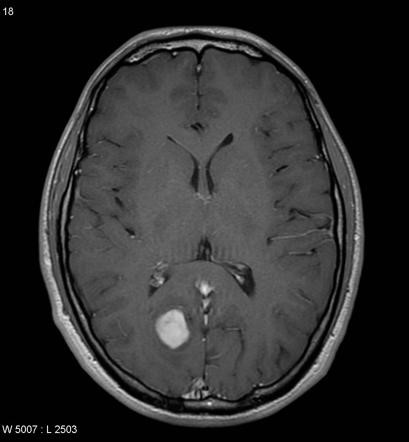 Image of a ganglioglioma (white region).
Image of a ganglioglioma (white region).
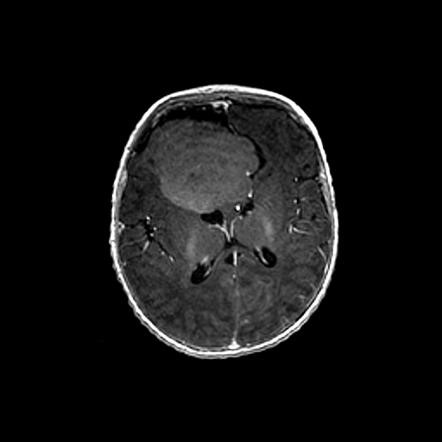
The above image shows how large these tumors can become. Literally crowding out other brain structures in this case. Tumor is at 11 o’clock.
Treatment and prognosis
SURGERY IS PREFERRED METHOD
The very best solution for cure is surgery if at all possible. Local resection is the treatment of choice and determines prognosis. In the brain where a reasonable resection margin can be achieved, prognosis is good with at least an 80% five-year survival. In the spinal cord where this is not possible without devastating deficits local recurrence is very common.
If only incomplete resection is achievable, or tumor recurrence occurs then radiotherapy may be of some benefit but will not cure it.
Although considered a low-grade malignancy this tumor is anything but benign. It can continue to grow and obliterate brain structures and eventually cause death.
Most importantly is the ability of the surgeon to remove as much tumor as possible to prevent recurrence. In the brain that occasionally can be done.
HER FIRST SEIZURE LEADS TO CRANIOTOMY 2006
Case continued: When Taylor was only six years old on All Hallows Eve, she suddenly and quite unexpectedly lost consciousness and fell out of her chair. From there she fell into a deep sleep for the rest of the evening. By the following morning Taylor began vomiting and had her first seizure.
Subsequently her doctors found a brain tumor of unknown type the size of a golf ball. She was scheduled for surgery (2006) which went well. At least technically. The surgery did affect her brain causing her to slow down in certain areas such as learning new concepts. And her peers never let her forget it by referring to her as “tumor girl,” stupid and retarded were terms commonly thrown about.
HER SECOND CRANIOTOMY 2010
Finally, after her brain was allowed to recover she gradually could feel everything getting back to normal. Of course, that’s when the tumor returned as well. That was October, 2010. She had her second brain surgery in October which appeared to have gone well.
THIRD RECURRENCE OF TUMOR, NO SURGICAL INDICATION 2011
Then quite unexpectedly the tumor again resurfaced in 2011 with more novel and aggressive tumor features.
Mom:
…it was larger and more intertwined with her brain tissue than before. Between November and April, it doubled in size. Surgery was no longer an option because too much of her brain would have to be removed.
Taylor:
It was really upsetting. I kind of broke down when they told me the news. It’s hard to think about going through all of that again, but compared to some kids, I have it easy…[ref](http://tdn.com/news/local/targeting-the-tumor-winlock-teen-becomes-pioneer-in-painful-proton/article_b76fc88a-0547-11e2-9b48-0019bb2963f4.html) 12/13/2015[/ref]
FIRST TO RECEIVE PROTON RADIATION THERAPY 2012
At this point she was ready to give in. No more surgery, no more radiation. She made a deal to receive a new form of treatment called proton beam therapy. In September 2012 she was scheduled for proton therapy.
Taylor, 13, also is a pioneer. Earlier this summer, she became Roberts’ first patient with a ganglioglioma — a rare form of brain tumor — to undergo proton beam therapy. The procedure shoots a precise beam of protons at cancer cells, sparing surrounding tissue from the lethal effects of X-ray radiation.
The 10-week regimen of weekly treatment inside the “gantry” — the sealed tunnel where the powerful rays worked away at her tumor — were hard to endure. But Taylor, her family and doctors believe it may be the only way to finally beat a tumor in her left temporal lobe when it appeared a third time.[ref](http://tdn.com/news/local/targeting-the-tumor-winlock-teen-becomes-pioneer-in-painful-proton/article_b76fc88a-0547-11e2-9b48-0019bb2963f4.html) 12/13/2015[/ref]
Taylor relates how the painful wire mask on her face, needed to keep her immobile, was cutting into her face. This mask is bolted to the table prior to initiating the proton gun.
She will need to endure a ten-week trial of proton therapy. Then after that, months later, they would evaluate Taylor and see if it was successful.
HIGH TECH PROTON THERAPY FAILURE
The high-tech treatments worked — for awhile (sic). Taylor’s tumor shrunk after initial radiation sessions but started growing again last August.
That’s when Owen, determined to heal her daughter, turned to marijuana oil therapy.[ref](http://420insight.com/medicinal/tumor/winlock-mother-says-marijuana-oil-healed-girls-brain-tumor/) 12/13/2015[/ref]
Taylor’s mother Owen made that decision after hours of research on the tumor shrinking abilities of cannabis. They also live in a medical marijuana legal state which makes curing your disease a thousand times easier.
LOW TECH HEALING GREEN CURES TAYLOR’S BRAIN TUMOR
I absolutely had concerns about it. This is definitely out-of-the-box thinking, but we didn’t have any other choices,…We knew we would be under a microscope. Everyone had an opinion on what we were doing. But, with all the research I did, I knew it couldn’t hurt her.
A gram of the oil costs about $50, but Owen gets the marijuana oil for free from a manufacturer in the Tacoma area.[ref]IBID[/ref]
That’s a serendipitous event for sure since the cost of treatment using cannabis oil is about $1,000-$1,500 per month at least. Perspective needs to be maintained. When comparing it to conventional oncology the cost is closer to one percent of the average cost of chemotherapy, radiation and hospital stay.
Marijuana oil, also known as Rick Simpson Oil (RSO), is a flourishing alternative cancer treatment. Research into the science of cannabinoids provides several bona fide mechanisms by which cannabis can actually cause tumors to shrink. Many scientists have reported that THC the psychoactive component of cannabis, and CBD a non-psychoactive cannabinoid found in marijuana, can kill or inhibit the growth of some types of cancer cells, according to the American Cancer Society.
Many patients who have “cured” themselves of deadly cancers will testify to the power of whole cannabis preparations such as RSO. It’s very important to a use full-spectrum cannabis oil like RSO. This way you will not miss out on the synergistic “entourage effect,” from all seventy or so phytocannabinoids.
Until more research is done unraveling which cannabinoids do what, it’s best to take them all, stoned or not. My article published last month entitled THE REASONS WHY MARIJUANA KILLS CANCER lists five powerful antitumor properties of THC.
THE FIVE REASONS WHY MARIJUANA CURES CANCERS
1. THC is anti-proliferative. Meaning that it inhibits cancer cells from reproducing. One of the hallmarks of cancer cells is that they keep replicating, they are immortal and unstoppable, that’s the problem. “THC inhibits protein synthesis so that tumors cannot grow.” (Dr. Donald Tashkin Pulmonary and Critical care UCSF)
2. An antiangiogenic effect. Here THC inhibits the ability of cancer cells to grow new blood vessels. Stop blood vessel formation and you prevent cancers from feeding and oxygenating thus encouraging their demise.
3. Anti-metastatic effect. THC prevents cancers from spreading from the main tumor into other parts of the body. Keeping a primary tumor from metastasizing is of paramount importance in reducing death rates in cancers. The mets are which generally kill the patient by disrupting organ function and starving the patient of vital nutrients.
4. THC has a powerful apoptotic effect. Meaning that THC induces cancer cells to commit suicide. This is a feature of normal cells but malignant cells have lost that ability so they live forever. This effect hastens the death of cancer cells while leaving normal cells untouched.
5. THC stimulates CB receptors on tumors to produce ceramide. Ceramide is a compound that enters cancer cells and inactivates the cell’s energy source the mitochondria. This leads to cell death.
MUMS THE WORD ON THE ONCOLOGY WARD
Oncologists at St. John Medical Center in Longview did not want to comment. Taylor’s oncologist at Seattle Children’s was unavailable for an interview, but Owen said he didn’t credit marijuana oil for eliminating the tumor.
I LOVE THE THOUGHT OF MARIJUANA OIL BEING NATURAL
Taylor started taking marijuana oil at a rice grain-sized dosage, building up her tolerance to 1-gram capsules for 3 months. A naturopath (an alternative medicine practitioner) monitored Taylor’s dosage, but she would still experience hallucinations that lasted about 10 hours, Owen said.
I love the thought of (the marijuana oil) being natural. It really changed my life, but it did give me some trouble…I lost who I was.
Owen said her daughter seemed like she was in an “altered state” on the medicine. However, Owen said she did not want to equate the medication to being “stoned.”
It’s not an easy treatment. It’s not fun,…It is a very strong medicine, and that’s why it’s medicine. It’s not recreational.
The medicine was so strong that Owen pulled Taylor out of school last November — about the same time the tumor started shrinking.[ref]IBID[/ref]
CURED WITH CANNABIS OIL?
Winlock 15-year-old Taylor Rehmeyer has battled an aggressive brain cancer for nearly a decade with chemotherapy and radiation. But she and her mother say it was marijuana that finally cured her.
Her mom (Karen Owen) relates that Taylor’s last MRI which was done in May, showed no major abnormalities. There was no evidence of any tumor left in Taylor’s brain.
Karen Owen: the doctors at Seattle Children’s Hospital don’t want to admit it was cannabis, but I don’t care. She’s cancer-free, it’s more than we could have ever hoped for.
Taylor was diagnosed at age 6 with a rare brain tumor that has returned three times. She had two brain surgeries and one proton therapy session. For nine years Taylor has been in and out of hospitals. Each time thinking things were going to improve, but they never were able to cure her or put her into remission. Not until she completed a three-month course of RSO at one gram per day which appears to be the average cancer busting dose once you build up your tolerance to the potent psychotropic effects.
I believe the cannabis oil played an important role in her “cure.” Although this brain tumor is not an aggressive malignancy like GBM, it is still a rapidly growing cell type. It is noteworthy that in some cases these tumors may regress into deadly and destructive cell types such as glioblastoma multiforme (GBM). GBM is one of the most aggressive brain tumors in existence.
Taylor’s case is another example of why we need clinical trials on human volunteers.
Woman Treated Colon Cancer in 48 Days Using Cannabis Oil
Woman Treated Colon Cancer in 48 Days Using Cannabis Oil
Today we’ll discuss the amazing story of how a woman cured her colon cancer using cannabis oil commonly called Rick Simpson Oil. This is the remarkable case of a South African woman who cured her colon cancer in less than two months using a tincture of marijuana.
Lindsey is from one of the most beautiful cities in the world, Cape Town, South Africa. Situated at the confluence of two great oceans the toasty warm Indian Ocean and the frigid ice bath South Atlantic Ocean drawing currents off antarctica, which makes it one of the best surfing destinations on Earth.
Lindsey was diagnosed with colon cancer stage III, “with a spot on my liver” which would make it even a deadlier stage IV, on Sept 12, 2012. Colon cancer is one of the most lethal cancers to have and difficult to treat. The American Cancer Society mentions that:
Excluding skin cancers, colorectal cancer is the third most common cancer diagnosed in both men and women in the United States.
The American Cancer Society’s estimates for the number of colorectal cancer cases in the United States for 2015 are:
• 93,090 new cases of colon cancer
• 39,610 new cases of rectal cancer
Overall, the lifetime risk of developing colorectal cancer is about 1 in 20 (5%).[ref](http://www.cancer.org/cancer/colonandrectumcancer/detailedguide/colorectal-cancer-key-statistics) 12/09/2015[/ref]
From the National Cancer Institute:
OVERVIEW
Colorectal cancer is cancer that starts in the colon or rectum.
Colorectal cancer often begins as a growth called a polyp, which may form on the inner wall of the colon or rectum. Some polyps become cancer over time. Finding and removing polyps can prevent colorectal cancer.
Colorectal cancer is the third most common type of cancer. Deaths from colorectal cancer have decreased with the use of colonoscopies and fecal occult blood tests, which check for blood in the stool.
Anything that increases your chance of getting a disease is called a risk factor. Having a risk factor does not mean that you will get cancer; not having risk factors doesn’t mean that you will not get cancer. Talk with your doctor if you think you may be at risk. Risk factors include the following:
– A family history of cancer of the colon or rectum.
– Certain hereditary conditions, such as familial adenomatous polyposis and hereditary nonpolyposis colon cancer (HNPCC; Lynch Syndrome).
– A history of ulcerative colitis (ulcers in the lining of the large intestine) or Crohn disease.
– A personal history of polyps (small areas of bulging tissue) in the colon or rectum.
Signs and symptoms of colon cancer:
– A change in bowel habits.
– Blood (either bright red or very dark) in the stool.
– Diarrhoea, constipation, or feeling that the bowel does not empty all the way.
– Stools that are narrower than usual.
– Frequent gas pains, bloating, fullness, or cramps.
– Weight loss for no known reason.
– Feeling very tired.
– Vomiting.
Other factors not mentioned are eating a high fibre diet and getting proper sunlight exposure are two factors that may decrease risk.
Stages of Colon Cancer
• After colon cancer has been diagnosed, tests are done to find out if cancer cells have spread within the colon or to other parts of the body.
• There are three ways that cancer spreads in the body.
• Cancer may spread from where it began to other parts of the body.
• The following stages are used for colon cancer:
o Stage 0 (Carcinoma in Situ)
o Stage I
o Stage II
o Stage III
o Stage IV
RISK INCREASES AS TUMOR INVADES
As you can see from above once the tumor starts growing through the mucosal layers and invades through the serosa and into the surrounding tissues, blood vessels, and lymph nodes, the possibility of a cure drops rather dramatically and death rates climb. For example, if you can discover a grade I tumor (usually by getting lucky since symptoms are very vague), it may be resected for a cure. This disease is high risk because often times there are no reliable symptoms to alert you until it’s too late and it had already spread.
ONE YEAR EARLIER
However, her problems really started about one year earlier when she presented with severe abdominal pain. She went to see her family doctor who initially thought it was a urinary tract infection and sent her home with a prescription for antibiotics. However, it did not improve. She paid two more office visits. By the third visit they discovered she had an ovarian cyst and a torsion: a cyst on her ovary and the ovary itself which had twisted. This can be very painful and in her case warranted surgery for removal of the cyst and ovary.
FIRST SURGERY
She was scheduled for surgery to remove her ovary which they accomplished. After that, apparently things took a turn for the worse. While she was still under anesthesia they discovered something abnormal in her colon, a mass of some kind. But they didn’t explore it further for unknown reasons, and closed her back up rather than calling for a general surgeon. Adding more complications, post operatively they discovered that her colon and bladder had been punctured accidentally from the surgery. This can be deadly since the colon contains high numbers of bacteria that could easily take up residence in the peritoneal cavity, (the abdominal cavity), and multiply causing peritonitis, and sepsis (blood poisoning) as the bacteria invade the blood vessels from the peritoneum.
SECOND “EXPLORATORY” SURGERY
She was developing sepsis as her colon contents seeped into her abdomen. So they scheduled an emergency exploratory laparotomy to see what was happening inside.
Finally, after her surgery which required washing out her abdomen with antibacterial iodine tincture called Betadine, they discovered yet another problem. She had a mass in her colon consistent with colon cancer. This was removed and staged. They gave her the weekend off with plans to treat her colon cancer on Monday.
“I go back to hospital on Monday, they monitor me (I had some “mass” in my abdomen) they were worried about, two days later, they discharged me with an appointment to the oncology ward in a few weeks. The diagnosis – Stage 3 Colon Cancer. They had cut out a tumour in my colon, but it was in my nodes, and there was spot on my liver. Only course of action, 6 months of chemotherapy, once a week, for 30 weeks, and we see what happens from there.”
SIX MONTHS OF CHEMO, CANNABIS HELPS
So began her chemotherapy saga on the 14th of October 2011. She relates how the chemo wore her out and made her unbelievably sick as it “sucked the life out of me. Some friends brought over some weed to smoke which gave me an appetite for the first time while relieving my nausea.”
“I smoked some, it made things so much better, not only could I enjoy food again, I slept better, and generally felt a sense of well-being. I told my doctor about it and he said to take in as much as I can. He said he had done some research outside of his work, and believed in its healing properties, but was not in a position to give it to patients, or even to recommend it, but he was taking a chance with me because he could see I would get to the truth sooner or later.”
REPEAT CT SCAN
After 15 weeks of chemo a repeat CT scan showed a depressing event which is very common with colon cancer. She now had “spots” on her liver (four), kidney and gall bladder. These are ominous signs, because they can be from metastatic spread of the original tumor in the colon to destinations in other organs, the worst news one could receive. As you can see from above, stage IV is by definition the involvement of tumor in other areas away from the primary tumor. This leads to a sad 11% five-year survival.
However, it turns out that all of these new lesions were from the chemotherapy! So the chemo was evidently harming her while they were trying to cure her with it. However, she did have several metastatic lesions from before which were still there. At least it hadn’t accelerated like so many do.
STARTS RICK SIMPSON OIL
Lindsey relates:
“The chemo was causing more harm than good.
That day I made life a changing decision (either way), I told the oncologist I want the chemo to stop and the remainder of my “treatment” to be an opportunity for me to heal myself holistically. She wasn’t happy but gave me an appointment for the 23rd May 2012. Saying they will still follow protocol and treat me even if I don’t take the chemo. I wondered whether she didn’t worry too much because she probably believed I wouldn’t be alive on the 23rd May.
Around that time I met some interesting people on facebook who had a lot to say about cannabis oil curing cancer, I did all the research I could do and could only come up with positive things about the plant. The testimonials of people who have been cured were incredible. I can’t mention names, but I wrote on the wall of one of the groups that are fighting to legalize cannabis, asking if anyone knew where I could get my hands on some cannabis oil. I already knew about the benefits while on chemo.
I managed to connect with some people who are taking the legal issue to parliament. These people knew some people who were growing the herb to heal people with cancer. I paid R7200.00 for 6 syringes for the full dose needed to ingest to kill the cancer, which was 6 syringes full. (Depending on the exchange rate, R7200 South African Rands = $900-1000 US Dollars.)
Cannabis is very strong and the idea is to build up the daily dose over time. One dose is a drop on your finger about the size of “half a grain of rice”. The syringe is the easiest way to store and produce one drop of oil at a time. I took all 6 syringes, which totalled 18 grams, in 46 days. Most people take about 90 days.”
Lindsey comments below on her “reversal” which was to reverse her colostomy.
28th March 2012:
“I’m at the hospital to see the oncologist and the surgeons who did my operation to ask for them to schedule my “reversal” Operation. I undergo a whole range of tests and scans and meet later in the afternoon with four doctors present.”
REPEAT CT SCAN REVEALS AMAZING DISAPPEARANCE OF TUMORS
The results?
There is no sign of any cancer in my body!
“What I have realised through this experience is only I am responsible for my health and it’s up to me to heal my body…no doctor can do that. And no one knows what’s best for me…but me!”
Lastly, I have to say that my cancer diagnosis was a true blessing …it facilitated a change within me on every level – emotionally, physically, mentally and spiritually…it formed an unbreakable bond of love and support with my husband. I’ve become brave and confident in my own power to heal myself…and this is truly the biggest blessing…and I really want to help inspire others to do the same…Ps: And the date of my reversal operation booked by the surgeon is 7th September 2012 (exactly a year to the day I was diagnosed – coincidence?)!
In summary, we have a female with stage IV colon cancer who was not able to continue her chemotherapy due to adverse reactions from it. She opts instead to use RSO and in about 6 weeks her metastatic lesions in her liver disappeared and her colon margins were free of tumor as well.
Chalk it up for another cure using marijuana (and possibly the effects of chemo). She also had completely changed her diet to include many supplements and increased her consumption of organic fruits and vegetables.


